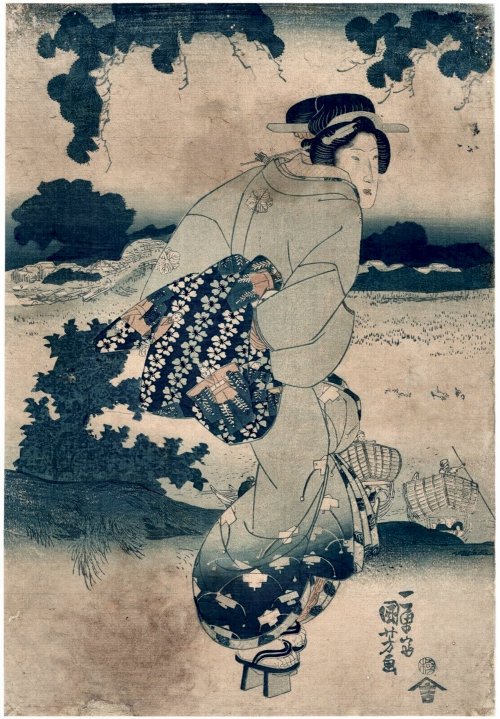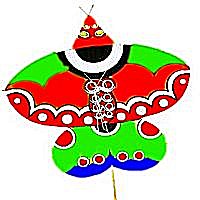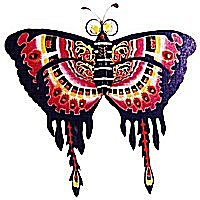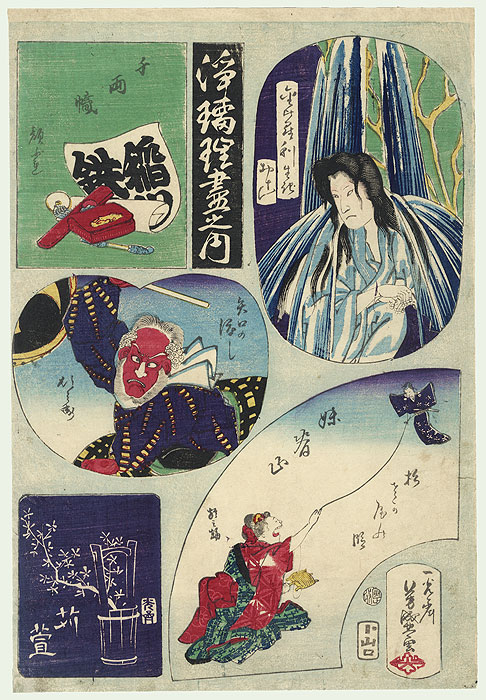| |
Glossary
|
| Term |
Term
(Japanese) |
Remark |
||||
| Aizuri-e |
|
Aizuri-e is a style of ukiyo-e
from the Edo
period (Japanese: 藍摺絵 "blue printed picture") .
It refers to an image created using only shades
of others than blue pigment. In fact, it is a
type of nishiki-e that is made by layering blue
pigments in different shadings , and there are also
works in which crimson and yellow is added to the blue
colour. At the end of the Bunsei era (1818-1830 ), large
quantities of Prussian blue were imported, and
from 1829 onwards it began to be widely used in Kyoka
Surimono.
Use of Prussian Blue began in the 1830s: Before that, the coloring of Nishiki-e was restricted as a result of the Tenpo Reforms (prohibition of luxury). Aizuri-e became very popular due to the refreshing feel of the strong blue color. Katsushika Hokusai 's "Thirty-six Views of Mt. Fuji'', published from 1st year to 3rd year of Tenpo period, is considered to be a masterpiece of Aizuri-e printing. |
||||
| Aragoto |
荒事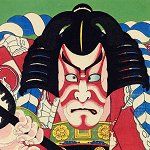 |
The expression 'aragoto' literally 'absurd style' is an abbreviation of 'aramushagoto', literally 'the reckless warrior matter'. This describes a bombastic Kabuki style exagerrating all aspects of the rôle (acting, wig, make-up or "kumadori", costumes, dialogues, oversized swords, etc.) to portray valiant warriors, fierce gods or demons. The more general kabuki genre style is 'tachiyaku' ('leading male rôle', '立役'). Exaggerated 'tachyaku' 'absurd style' maybe 'aragoto' or in contrast 'wagoto' (和事), literally 'soft style' in exaggerated form. | ||||
| Asahina | 朝比奈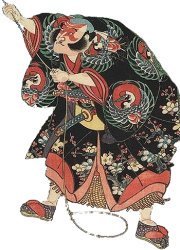 |
Asahina Yoshihide (朝比奈 義秀), also
known as Asahina Saburō (朝比奈 三朗) aka Asahina Kobayashi
(朝比奈 小林), Asahina Tobei (朝比奈藤兵衛), was a
Japanese warrior of the early 13th century, and the
son of Wada Yoshimori. Though very likely a historical
figure, Yoshihide appears in literature and in kabuki
as a somewhat superhuman legendary character.
According to these, his mother was the renowned female
warrior Tomoe Gozen, and he had superhuman strength
which he used to accomplish a number of stunning
feats. Strongman Asahina is supposed to be a friend of
the Soga family, and a strong supporter of the Soga
Brothers (cf. 'Soga
Monogatari') Strongman Asahina is quite often
depicted in kabuki-e (Kabuki woodblock prints), often
identified by his unique
makeup and his Crane-Crest. |
||||
| Bakufu |
refer to 'Shōgun' | |||||
| Bekaku | ベツカコー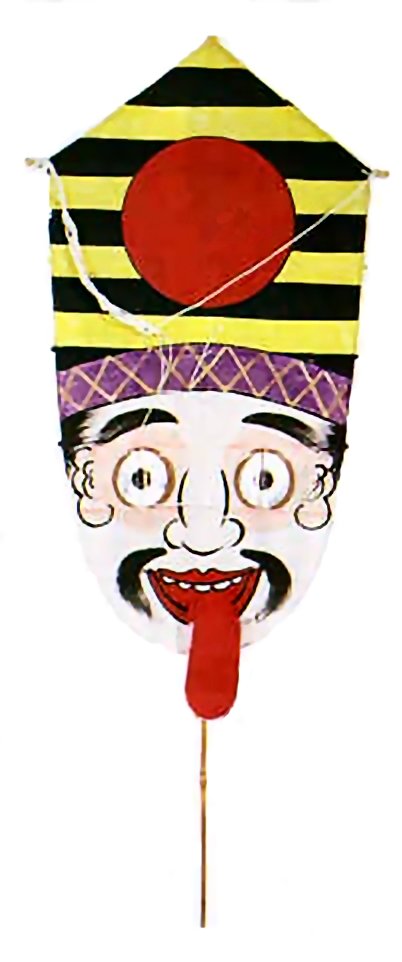 |
BeKaku kites have humorous looks
and need a tail to get a stable flight. The kite has a
prolonged tongue as stabilizing feature. This type of kite is originated in Yokosuka district, Shizuoka prefecture which is famous for having a variety of kites. The eyes of these kites often have a wind driven rotating mechanism |
||||
| Benizuri-e | 紅刷絵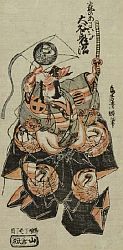 |
Benizuri-e (紅刷絵, "red paint
pictures") are some kind of early Japanese woodblock
prints. Available pigments for woodblock printing were
usually red (beni) and green, and occasionally
different kinds of other colours. They were either
printed or added after print processing. "Benizuri"
literally is "red printing" colour (紅刷), but due to
visional impression often translated as " pink" or
"krimson red". Generally spoken, early ukiyo-e prints
are less clourful then later prints.This was a result
of the availability and price of colours and pigments.
Benizuri-e peaked in the mid 1700s. Torii Kiyomitsu, his pupil Torii Kiyonaga, Torii Kiyotsune and other members of the commercially succcessful Torii school were typical representatives of Benuzuri-e artists. Other well known ones were Okumura Masanobu, Nishimura Shigenaga, and Ishikawa Toyonobu. |
||||
| Benzaiten | 弁才天
or 弁財天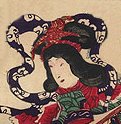 |
Benzaiten
relates to the Hindu goddess Saraswati. Alternative
names are Benten (弁天), Bentensama (弁天様), or
Benzaitennyo (弁才天女). Se was adapted from Buddhism, and
was given the attributes of talent, beauty and music
among others. She may be seen in Shinto temples, her
figure appearing in the 'Torii'.
She is represented as a smart, beautiful woman, and
often carries a 'biwa', a Japanese traditional
lute-like instrument and is normally accompanied by a
white snake. She is the patron of artists, writers,
dancers, geishas, and other artists. Also refer to 'Seven Gods of Fortune' |
||||
| Bijin-ga /Bijin-e |
美人画 / 美人絵 | Literally.
"beautiful man's picture" originally used for men and
women; in ukiyo-e most often used for picture of
a (female) beauty; often used for Geishas and/or
prostitutes |
||||
| Bird Kite |
鳥凧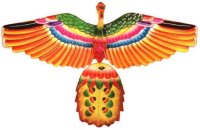 |
Bird Kite
(Tori-tako) also refer to 'Torii' , Hagomoro, Bird (kite) and Kite Kite |
||||
| Bishamonten | 毘沙門天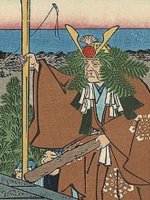 |
Bishamonten is considered the "chief" of the Four Heavenly Kings and an important figure on his own in Buddhism in Japan, guarding the temples. In Shinto, he is one out of the "Seven Lucky Gods". He is the god of fortune in war and battles, also associated with authority and dignity. He is literally the protector of those who follow the rules and behave appropriately. As the patron of fighters, he is dressed in armour and a helmet, carrying a pagoda in his left hand. He also acts as protector of holy sites and important places and holds a spear in his right hand to fight against the evil spirits. He is usually depicted in illustrations with a hoop of fire. Also refer to 'Seven Gods of Fortune' | ||||
| Block
Cutter's and Printer's Seals |
" 彫師....",
"摺師..."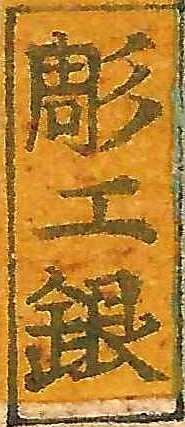 |
Most ukiyo-e prints do
not identify these important artisans either by
inscription or seals. However, special editions of
print designs did include their names, usually in the
form of a small cartouche cut into the keyblock, but
sometimes hand-stamped on the print and displays the
names and functions "hori shi...."(" 彫師...."),
literally meaning "cut by master....". or simply
"carver" ("horikō", "彫工", or
"horiko jin", "彫工銀"). Printer's seals or "suri shi..." ("摺師...") literally meaning "printed by master...". Printer's seals are quite rare. |
||||
| Bokashi |
ぼかし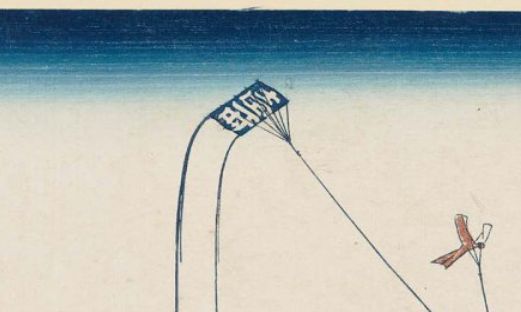 bokashi shading (Hokusai's "Mitsui Stores") |
Bokashi shading is a
technique used in Japanese woodblock printmaking. It
achieves a variation in lightness and darkness (value)
of a single color or multiple colors by hand applying
a gradation of ink to a moistened wooden printing
block, rather than inking the block uniformly. This
hand-application had to be repeated for each sheet of
paper that was printed. Especially Hokusai and Hiroshige influenced this technique by applying the fading of Prussian blue dyes in skies and water in order to create an illusion of depth. |
||||
| Butterfly Kite |
蝶凧
|
Butterfly Kite (Chō-tako); not a popular Japanese kite, but very popular in China | ||||
| censor seals |
改印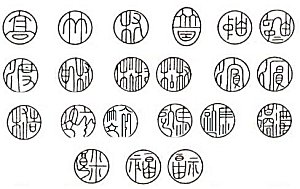 |
From 1790 until 1876 (when formal
censorship ceased), all woodblock prints had to be
examined by official censors, and marked with their
seals. From 1842 to 1853, individual censors called
Nanushi, marked prints with their individual seals,
bearing characters from their names. The date of a
Japanese print can often be ascertained from the
censor seals on it - at least for prints which were
sold publicly, and thus had to pass the censors. Two
different marks (改印) are to be found: aratame(改): literally, "examined"; kiwame(極): literally, "approved"; nanushi: literally, "mayor" (of a village or town); the name for a group of censors who examined woodblock prints in the period 1842-1853. compare to blockcutter's and printer's seals |
||||
| Chirimen-e | 縮緬絵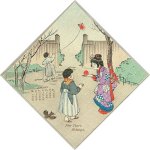 |
Chirimen-e (Chirimen-gami-e,
compressed thread paper prints) were crinkled paper
prints or "crepe" prints (sometimes referred to as
'crepon'). The compression technique resulted in a
highly textured surface and noticeably smaller paper
sizes, which offered a different aesthetic from the
image printed in standard editions. Chirimen-gami
publications were especially popular for children's
books, as the crepe paper was somewhat resistant to
tearing and thus had a better chance of surviving
handling by children. |
||||
| Chushingura | refer to 'Kanadehon' |
|||||
| Chō-tako | refer to Butterfly Kite |
|||||
| Chuban | 中 判 | Chūban or "Medium
format" print size about 126 × 19cm (10.2" × 7.5")
(cf. Japanese
Paper Formats) |
||||
| Circular Kite |
丸凧 |
Circular Kite (Maru-tako). refer to 'Fukuroi Circular Kite' and 'Fugu Kite' | ||||
| Coat-of-Arms Kite |
紋章凧
(福島凧)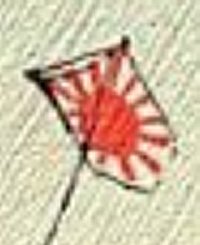 |
Coat-of-Arms Kite
(Monshō-tako), also Fukushima Kite (福島凧) or Sword kite
(Ken tako, 剣凧); five angled kite, bridled like a small
Edo Kite. |
||||
| Crane | 丹頂鶴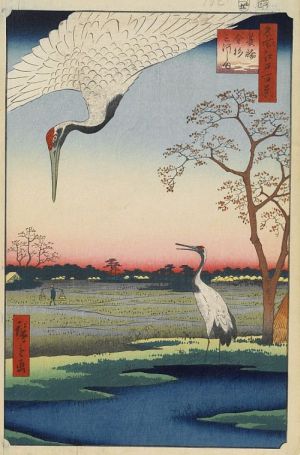 HIROSHIGE, 100 Famous Views of Edo (Minowa, Kanasugi and Mikawashima villages) 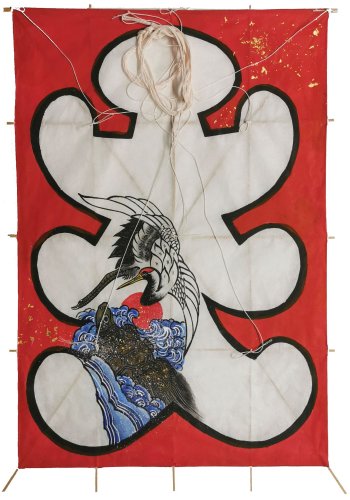 HinodeTsuro, Tortoise and Ocean waves on 'Fu' katakana Edo-Kaku kite |
In Japan, the
crane, especially the red-crowned crane (Manchurian
Crane, grus japonensis), is said to live for 1,000
years. The red-crowned crane (tanchōzuru, 丹頂鶴) is
often featured in myths and legends. The crane is a
symbol of longevity, loyalty, and immortality. In art
and literature, immortals are often depicted riding on
cranes. A mortal who attains immortality is similarly
carried off by a crane. Reflecting this association.
The red-crowned crane is also a symbol of nobility. The logo of Japan Airlines (JAL) is the red-crowned crane. Asahina, the hero of many classical stories always wears a crane crest. The crane symbol is often connected to the sun symbol, in combination it is named 'hinode tsuru' (日乃出鶴). 'Hinode' means 'sunrise', 'tsuru' means 'crane', nowadays a famous Sake brand. |
||||
| Daikokuten | 大黒天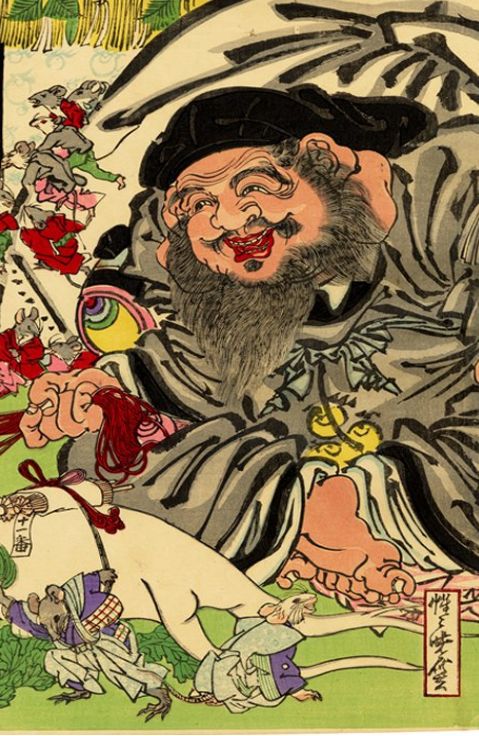 Daikoku by KYOSAI |
Daikoku(ten)
(literally the Big Black King) is the god of darkness,
household, kitchen esp. the stove, commerce and
prosperity. He is characterized by his smile, having
short legs, big earlobes, and is wearing a black hat
and black clothes. He is usually depicted with a bag
full of valuable objects, and is often followed by his
companion rat. He is one of the Seven Lucky Gods
(Fukujin). He is often depicted with one or more rats,
to be his symbolic animals. Daikokuten evolved from the Buddhist form of the Indian deity Shiva intertwined with the Shinto god Ōkuninushi, the ruler of the unseen world of spirits and magic. Daikokuten is frequently paired with Ebisu, sometimes supposed to be his father. Also refer to 'Seven Gods of Fortune' and 'Ebisu'. |
||||
| Daimyo |
大名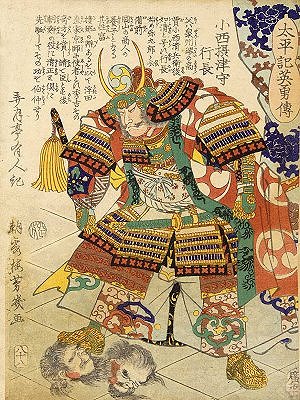 Utagawa Yoshiiku (歌川 芳幾) , Daimyo Konishi Yukinaga (“Taihei-ki eiyū Tsutō Konishi settsunokami Yukinaga”, 太平記英雄傳 小西摂津守行長) (1867) |
Daimyos (Japanese 大名), were local
rulers in feudal Japan. Daimyo lit. meaning "big
name", was originally a short form of Daimyōshu (大名 主)
and referred to their large estates. From the 12th
century, the word gradually became a name for a
position within the samurai system ranks. The daimyo were mainly members of the weapon carrying class (buke), and were subordinate formally to the shogunate. For their own part, they had samurai as vassals to pay from the income of their fief (han). Since the central power over long stretches of the Muromachi period could not enforce their violence, many daimyo could govern their fiefs de facto completely independently. |
||||
| Daruma |
達磨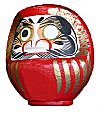 Daruma Doll |
Pictures of Daruma
are a popular motifs for kites in Japan, and one of
the most popular lucky charms in Japan as well. The
Daruma doll is made of paper mache and is loaded with
a weight in the base of the doll's body, therfore the
doll can not fall over ("Tumbling Doll"). Daruma thus
gives courage to sit up again in every situation. It
is often sold in Buddhist temples. Daruma often
carries the Kanji characters for happiness or success. The figure represents the Buddhist monk and Zen patriarch Bodhidharma (達磨, Daruma). The figure is shown without arms and legs, due to the fact that the monk allegedly sat nine years in meditation in front of a rock to attain enlightenment. When he awoke, he was annoyed that he fell asleep during meditation.Therefore his eyelids are wide open. Daruma deemed to be helper in the fulfillment of wishes. First, an eye of the lucky charm is painted and he is put at a place where you pass every day. If the request is fulfilled, the other eye is painted. Then the figure may be burned in a temple. |
||||
| Domain | 藩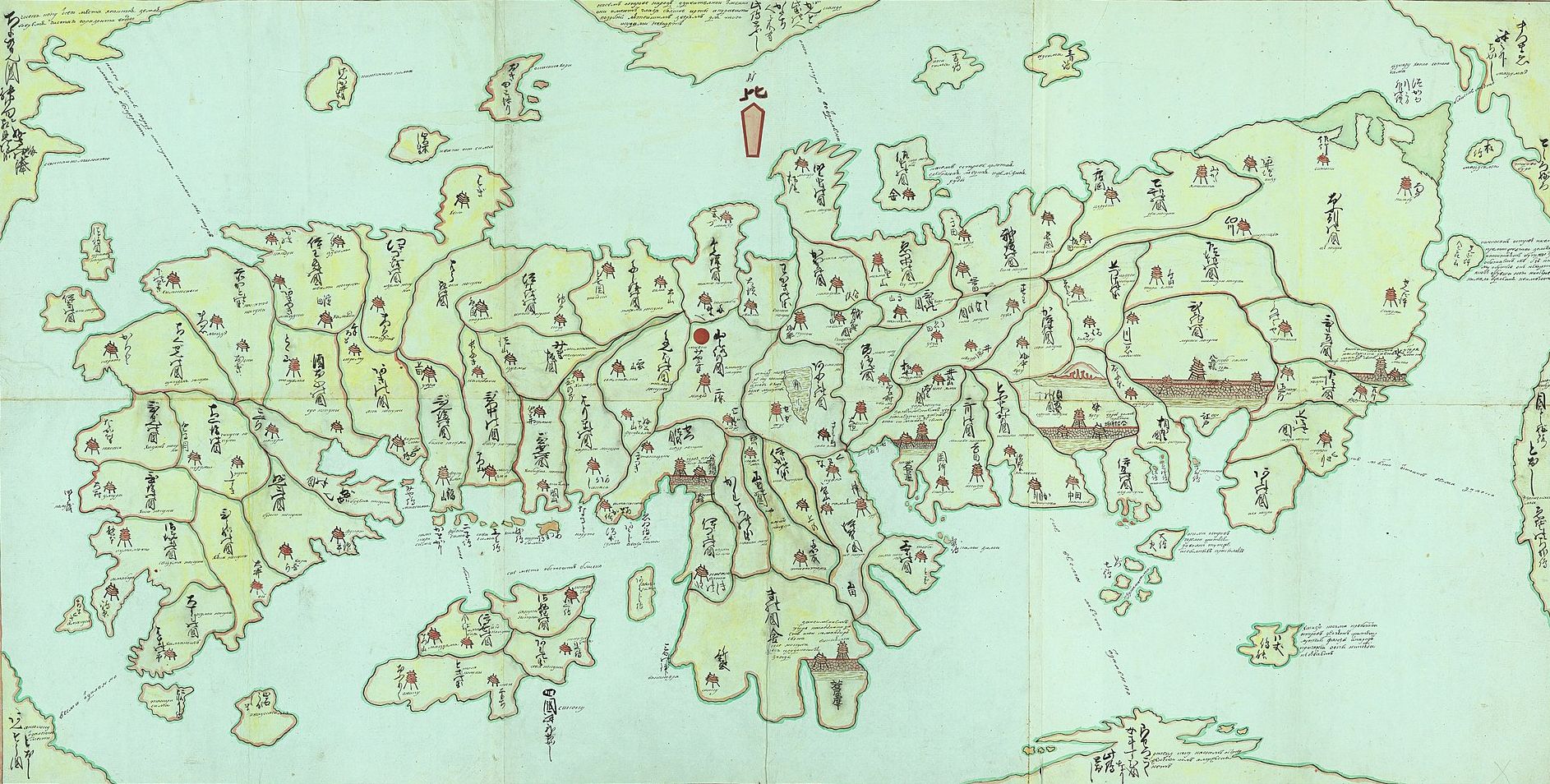 |
The han (藩 han) or domain
is the Japanese historical term for the estate of a
warrior after the 12th century or of a daimyō in the Edo period
(1603–1868) and early Meiji period (1868–1912). In Japan, a feudal domain was defined in terms of projected annual income, and not in owned land area. |
||||
| Ebisu |
恵比寿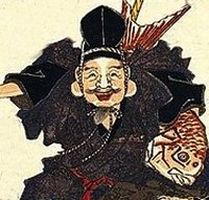 |
Ebisu is
the god of prosperity and wealth in business, and of
abundance in crops, cereals and food in general. He is
the patron of fishermen and therefore is represented
with fishermen's costumes and fishing gear. and is the
only one of the Seven Gods of purely Japanese origin.
The large red sea bream or sea bass (fish), is
sometimes associated with with fish restaurants. Ebisu
is frequently paired with Daikokuten, who is supposed
to be his son. Also refer to 'Seven Gods of Fortune' |
||||
| Eddy kite | 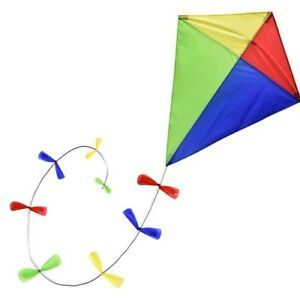 |
Eddy kites are named
after William Abner Eddy (1850 – 1909), an US
inventor, famous for his photographic and
meteorological experiments with kites.The kite is a
developement of a classical Malay kite. In English
often referred as 'Diamond Kite' |
||||
| Editor, (Publisher, Publishing
House) |
版元, はんもと (編集者, 出版社)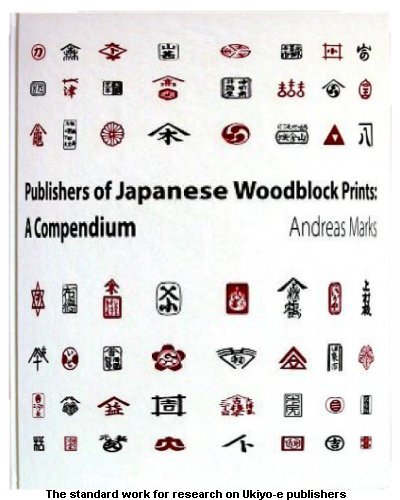 |
Editors (Publishers) had a leading role in the ukiyo-e business. They not only organized printing and sales, but were also often the clients of the prints. In addition to their commercial role, they often provided social support to the various professions involved in the manufacturing process. This role, which is reminiscent of a patronage relationship, is evident in the often long-term relationships between the artists. The publisher's seal and address can be found on the vast majority of prints from the ukiyo-e era. The seal itself and the name of the publisher (HanMoto, 版元, はんもと) are usually used in the same way. | ||||
| Edo | 江 戸 |
Edo (, literally
"bay-entrance" or "estuary") is the former name of
Tokyo. It was the seat of power for the Tokugawa
shogunate, which ruled Japan from 1603 to 1868. After
the Shōgunate was dissolved in 1868, the new
government renamed the city to "Tokyo" ("eastern
capital") and relocated the seat of the Tennō 1869. |
||||
| Edo era |
江戸時代 |
The Edo period (江戸時代 Edo jidai) or
Tokugawa period (徳川時代) is the period between 1603 and
1868 in the history of Japan, when Japanese society
was under the rule of the Tokugawa shogunate and the
country's 300 regional daimyō. The period was
characterized by economic growth, strict social order,
isolationist foreign policies, a stable population,
"no more wars", and popular enjoyment of arts and
culture. The shogunate was officially established in
Edo on March 24, 1603, by Tokugawa Ieyasu. The period
came to an end with the Meiji Restoration on May 3,
1868, after the fall of Edo. Confer to the Japanese Era-webpage. |
||||
| Edo Kite |
江戸凧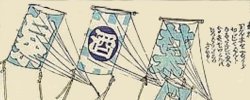 |
Edo Tako is a long
rectangular kite with many long bridle lines and long
tail ropes, named after the Capital City of ancient
Japan (todays Tokyo). Large Edo Kites are designed as to be assembled at the flying site. The kites vertical spars are mounted on site. Therefore the kite, only having it's horizontal spars, may be rolled up for convenience of easy handling and easy transportation. The number of bridles of Edo dako are 11 or 14 and each length of strings is about 20-25 times of its height. It is very difficult to adjust the center position of strings for good flight. |
||||
| Edo Kaku | 江戸角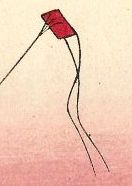 |
The smaller brother of the Edo
Kite is the 'Edo-kaku'. The kite has nearly the
same features as his big brother, but is of smaller
size. Edo Kakus are approximately 30-60cm in width and
60-90cm in height. Because of his smaller size, it
needs only three bridles lines but usually also has
two tails. |
||||
| E-hon or Ehon | 絵本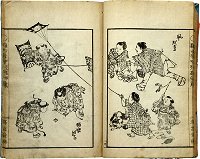 |
Literally
"illustrated book". E-hon or Ehon is
the Japanese term for (woodblock print) picture books;
often as vertical yotsugiri
format (quarter ôban) compare with Kibyōshi (classical version of modern comic book) |
||||
| Fan Kite |
扇子凧 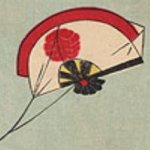 |
Fan Kite
(Sensu-tako, 扇子凧) or Ōgidako (扇凧) |
||||
| Fish Kite |
魚凧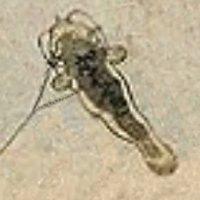 |
Fish Kite
(Sakana-tako), in Classical Ukiyo-e mostly a Catfish
Kite The rumbling of the 'Big Catfish Underneath" is the reason for an earthquake in popular belief at those times. Thus flying a catfish kite seems to pay hommage to the 'God of Earthquakes'. |
||||
| (Rising Sun) Flag | 旭日旗 |
The "Rising Sun
Flag" ("Kyokujitsu-ki", centered sun disc with 16 rays
on a white field) was adopted in 1889 as a naval
ensign and flag-of-war of the Imperial military
forces. Even today, militants and and others show this
symbol to demonstrate their backward-facing attitude. |
||||
| (Circle of the Sun) Flag | 日章旗 (日
の丸) |
The Nisshōki (日章旗, the "flag of
sun") is more commonly known in Japan as Hinomaru
(日の丸, the "circle of the sun"). The more civil variant of the flag shows no sunrays and since 1999 by law is the National Flag of Japan. |
||||
| Flag of
Japan, Variation |
日章旗 (日
の丸)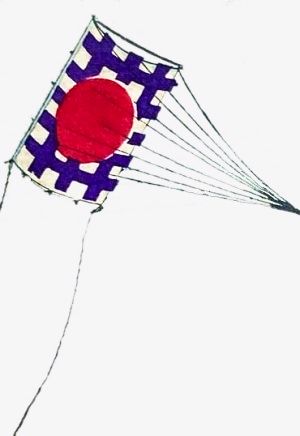 |
A popular variation of the Flag of
Japan, often found on Edo Kites |
||||
| Fugu (Puffer Fish) Kite |
河豚 凧
or ふぐ 凧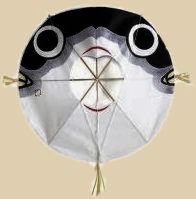 |
Fugu (Puffer Fish)
Kite; a circular kite with open central spacing,
comparable to Korean Fighter Kites. The Fugu is a symbol of Shimonoseki in Southern Honshu, also the home of the Fugu Kite. |
||||
| Fukuroi |
袋井 |
Fukuroi was No. 28
Station of the Tokaido Road (refer to 'Tokaido'). The
station was often a subject of Classical Japanese
Woodblock Prints |
||||
| Fukuroi Circular
Kite |
袋井の丸
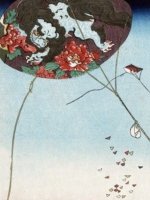 |
Fukuroi Circular
Kite (Fukuroi no maru) is is only found in Fukuroi. It
has three bridle lines and carries a single tail rope.
|
||||
| Fukurokuju |
福禄寿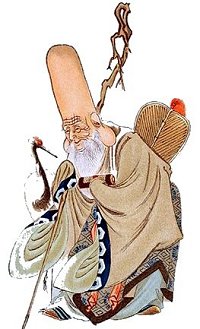 |
The god
Fukurokuju is the god of wisdom, luck, longevity,
wealth and happiness. He is the only god who was said
to have the ability to resurrect the dead. Fukurokuju
is characterized by the size of his head, being almost
as large as the size of his whole body, and is
represented wearing traditional Chinese costumes. He
normally carries a cane in one hand and in the other a
scroll with writings about the world. He is usually
accompanied by a turtle, a crow or a deer, animals
that are frequently used in Japan to symbolize a long
life. It is also said that he likes to play chess, and
so he is also credited for being the patron of chess
players. The characteristics of Fukurokuju and Jurōjin
bear tremendous overlap as they both trace back to the
Chinese Taoist deity Nánjílǎorén (南极老人). Also refer to 'Seven Gods of Fortune' and 'Kichijōten'. |
||||
| Fukushima Kite | 福島凧 | Refer to 'Coat-of-Arms Kite'
|
||||
| Geisha |
芸者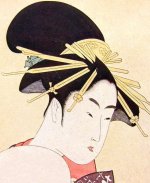 |
Geishas are
traditional Japanese female entertainers who act as
hostesses and whose skills include performing various
arts such as classical music, dance, games and
conversation, mainly to entertain male customers. The
word consists of two kanji, 芸 (gei) meaning "art" and
者 (sha) meaning "person" or "doer". The most literal
translation of geisha into English would be "artist",
"performing artist", or "artisan." Apprentice Geishas
are called Maiko (舞妓), (literally "dance child"). The
white make-up and elaborate kimono and hair of a maiko
is the popular image held of a Geisha. The depiction 'Geisha' was originally gender neutral, later the name for female entertainers; In connection with ukiyo-e often used as euphemism for prostitutes. Also refer to 'Bi-jin' and 'Kabuki' |
||||
| Genji Monogatari (The Tale of Genji) |
げんじものがたり (源氏物語) Murasaki Shikibu, by Tosa Mitsuoki (17th century) |
The Tale of Genji (げんじものがたり, 源氏物語, Genji Monogatari) was written in the beginning of the 1th century by Murasaki Shikibu, a female court lady. The 'Tale' is written in 54 chapters of about 800 poems in Hiragana scrip. It mainly concerns the loves of the handsome, sensitive, and gifted noble courtier Prince 'Genji', and each of the women in his life. This novel depicts aristocratic life in 11th century Japan, and is supposed to be the eldest novel of world literature. | ||||
| Geta | 下駄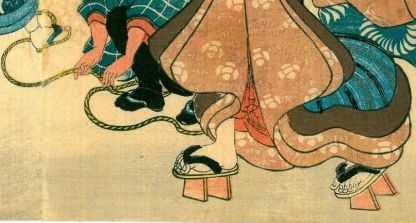 Getas and Sandals (from Kunimaru's "Spring Solstice") |
Geta (下駄) is a traditional
Japanese kind of wooden sandals, derived from the
Chinese MuJi (木屐). The sandals are elevated with commonly two "teeth", and is held on the foot with a fabric thong. |
||||
| ga |
画 (畫, 畵) |
The "ga" 画 (畫, 畵) is a delimiter
for an artist's signature ("painted by"~, ~"画"),
otherwise used as a synonym for "artist's name". Literally "ga" means "painting" or "painted". the "ga" is often a co-character for instance "ga hitzu" ("画筆") meaning "by the paintbrush of" or else. A "ga" is not identical with a "go" cf. to "go" also compare to imyo |
||||
| go |
號 or 号 |
Gō (號 or 号), 'art name'; a
pseudonym, similar to a pen-name in the West, used by
an artist. An artist will often have several different gō, often together with a preceeding epihet (imyō, 異名). A "go" is not identical with a "ga" cf. to "ga" ("画" ) Gō -Examples: a) "国周" (Kuni Chika): "国" (Kuni) and "周" Chika, a composite of the names of his two teachers, "Kunisada" and "Ichiosai Chikanobu". b)"国 貞" (Kuni Sada): In keeping with a tradition of Japanese master-apprentice relations as pupil of ToyoKuni (I), KuniSada was given the official artist name of "KUNI-SADA", the first character of which was derived from the second part of the name "Toyo Kuni". |
||||
| imyō | 異名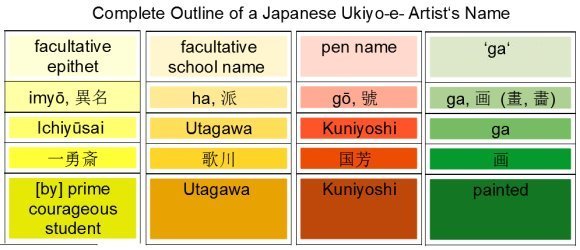 |
An Imyō
(異名) ist an epithet (sobriquet),
usually in front of the pen name of an artist (gō ,
號 or 号). The epithet is most often followed by a pen
name ("go", "號"),
and after that a delimiter for an
artist's signature named "ga" (ga, 画or 畫or 畵).
HOKUSAI has a plethora of epithets, may be more than 80. Thus a complete artist's name is composed of the epithet, the pen name, and the delimiter for his signature. Sometimes the preceding epithet is replaced by, or added to the artist's school name. |
||||
| Haikai | 俳諧 | Haikai (俳諧) and Haiku
(俳句) may both be transliterated to Haiku in English,
but is not the same. Haikai (俳諧) is a popular genre of
Japanese linked verse, which developed in the
sixteenth century out of the earlier aristocratic
renga. It meant "vulgar" or "earthy". "Haikai" may
also refer to other poetic forms that embrace the
haikai aesthetic, including Haiku. Haikai are often found on woodblock prints of the 18th and early 19th centuries. Most of the Surimonos contain Haikai verse. |
||||
| Haiku | 俳句 | A Haiku (俳句, is a short form of Japanese poetry in three phrases of 5, 7, and 5 on, respectively syllables. The essence of haiku is "cutting" (kiru). This is often represented by the juxtaposition of two images or ideas and a kireji ("cutting word") between them, a kind of verbal punctuation mark which signals the moment of separation and colours the manner in which the juxtaposed elements are related. | ||||
| Hagoromo | 羽衣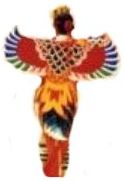 |
The
Hagomoro is a garment used by the mythic moonfolk.
They wrapped the moonmaiden, Kaguya, in this garment
when they took her back to her home in the sky, to
erase her memories of life on earth. In some lore,
occasionally known as Feather Robe, Celestial Feather
Robe or Celestial Feather Robe. 'Hagoromo' (The Feather Robe), is among the most-performed Japanese Noh plays.It is an example of the traditional swan maiden motif, also to be found in Western tales (Swan Lake etc.). |
||||
| Hanetsuki | 羽根突き, 羽子突き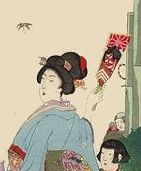 |
Hanetsuki is a Japanese
traditional game, similar to badminton without a net,
played with a rectangular wooden paddle called a
hagoita and a brightly coloured shuttlecock. Hanetsuki
racks ('Hagoita') sometimes have pictures of Kabuki
theatre performers on it. The game is mostly played by girls during New Year season. Nevertheless the game may be played by any gender in two fashions: by one person attempting to keep the shuttlecock aloft as long as possible, or by two people batting it back and forth. Players who fail to hit the shuttlecock get marked on the face with India Ink. Traditionally, the longer the shuttlecock remains in the air, the greater protection from mosquitoes the players will receive during the coming year. Although Hanetsuki is not as popular as it used to be, decorative hagoita are commonly sold throughout Japan. |
||||
| Harimaze |
Harimaze are
woodblock prints featuring multiple small scenes,
originally intended to be cut apart and pasted into
albums or applied to screens. Refer also to Omocha-e. |
|||||
| Hata |
refer to Nagasaki Hata |
|||||
| Hawk Kite |
鳶凧 |
refer to Kite Kite (Tonbi-tako) |
||||
| Hotei | 布袋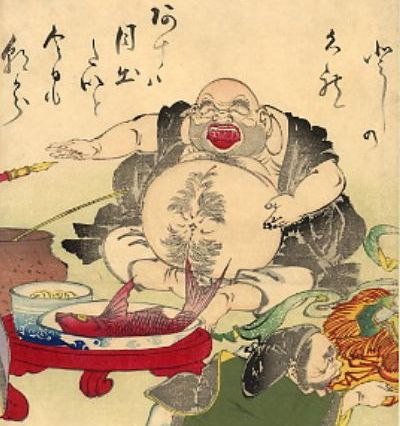 |
Hotei persists in
Japanese folklore as one of the Seven Lucky Gods (Shichi
Fukujin). He is originally a Chinese folkloric deity.
His name means "Cloth Sack", and comes from the bag
that he is conventionally depicted as carrying. He is
usually identified with or seen as an incarnation of
Maitreya, the future Buddha, so much so that the Hotei
(Budai) image is one of the main forms in which
Maitreya is depicted in China. He is almost always
shown smiling or laughing, hence his nickname in
Chinese, the Laughing Buddha. In the West, the image
of Hotei (Budai) is often mistaken for that of Gautama
Buddha, and is hence called the Fat Buddha. Another folkloristic belief say, that Hotei was a Zen priest, but his appearance and some of his actions were against moral condition. His appearance made him look like a quite mischievous person and he didn’t have a fixed place to sleep. Hotei in folklore is admired for his jovial attitude, plenitude, and wisdom of contentment. He is most often accompanied by bunches of children, often frolicking or mocking him. A popular belief in folklore maintains that rubbing his belly brings wealth, good luck, and prosperity. He carries a bag on his shoulders which is, according to the beliefs, loaded with fortunes for those who believe in his virtues. |
||||
| Hyakki Yakō | 百鬼夜行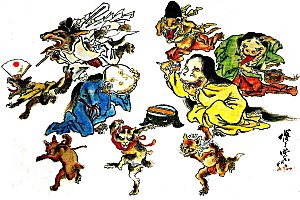 |
The animistic concept of 'shinto' leads to numerous kinds of superstitions. 'Hyakki Yakō', or 'Night Parade of One Hundred Demons' is a concept in Japanese folklore. It is a parade that is composed of a hundred kinds of yōkai (妖怪, supernatural mosters). If you meet them you may be deeply in trouble. The theme of 'Hyakki Yakō' is an often depicted subject of woodblock prints. | ||||
| Imyō | 異名 |
cf. to "A Complete
artist's name" is composed of the epithet, the pen name, and the delimiter for his signature. Sometimes the preceding epithet is replaced by, or added to the artist's school name. |
||||
| Jurōjin | 寿老人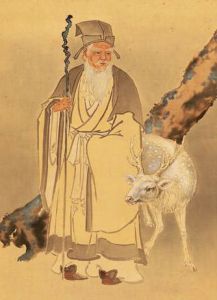 |
Jurōjin
is considered the incarnation of the southern polestar
(南極星 "nankyokusei"). He is the god of the elderly and
longevity in Japanese Buddhist mythology. Besides his
distinctive skull, he is represented with a long white
beard, riding a deer and is often also accompanied by
an old crane and a tortoise, both symbols of
longevity. In addition, he is usually represented with
peaches , a Chinese Taoist symbol, able to prolong
life. In his hand he holds a cane and a book or a
scroll. The wisdom of the world remains written in its
pages. Jurojin enjoys rice and wine, and is a very
cheerful figure. Also refer to 'Seven Gods of Fortune'. |
||||
| Kabuki |
歌舞伎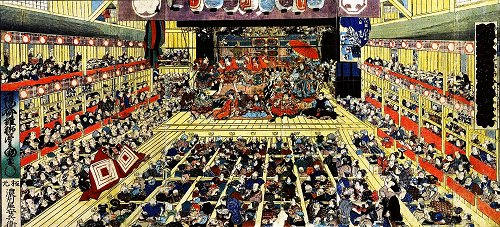 Tyokuni-III (1858 Performance in ICHIMURA-Za Theatre |
Kabuki (lit. "song
and dance act") is the traditional Japanese theater of
the bourgeoisie of the Edo period and consists of
singing, mime and dance. Kabuki developed to an
essentially secular art form and somewhat less formal
than the older, Buddhist-inspired Nō
theater of the samurai. Kabuki performances were
joyous entertaining events that occasionally involved
eating and drinking. The performances often took place
on catwalks in the audience area. The highest class of the Geisha's predecessor called 'Tayuu' ( 太夫). A female Tayuu was a combination of actress and prostitute, originally playing on stages set in the dry Kamo riverbed in Kyoto. They performed erotic dances and skits, and this new art was dubbed "kabuku", meaning "to be wild and outrageous". The dances were called "kabuki" and this was the beginning of kabuki theater. also refer to Geisha |
||||
| Kabuki-e | 歌舞伎絵 | often
used instead Yakusha-e
(refer to) |
||||
| Kacho-e Kacho-ga |
花鳥画
/ 花鳥絵 |
The
literal meaning of the Japanese word kachō-ga
(花鳥画) or kachō-e (花鳥絵) is
‘images of flowers and birds’. But the genre
includes more. It encompasses plants, grasses,
trees, animals, fish, insects; actually the entire
living natural world except man and the physical
landscape, and shows the poetry of nature.
|
||||
| Kadomatsu | 門松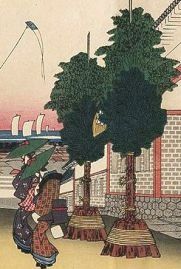 |
Kadomatsu
("gate pine") is a traditional Japanese New Year
decoration, placed in pairs in front of homes to
welcome ancestral spirits or kami of the harvest, and
are considered temporary housing for kami. Kadomatsu
are typically made of pine, bamboo, and sometimes ume
tree sprigs which represent longevity, prosperity and
steadfastness, and often are planted in a wooden
container decorated with ropes. After mid January the kadomatsu is burned to appease the kami or toshigami and release them. |
||||
| Kaika-e | 開花絵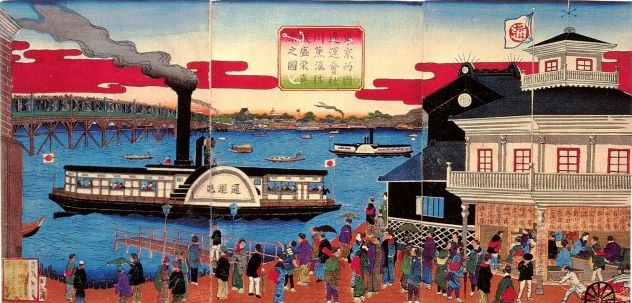 |
In the upcoming and
opening period of Meiji, pictures of modernisation
that focused on advances (i.e. Westernization) in
government, industry, architecture, science, weapons
and military, and even social behavior (smoking,
clothing and hair cut styles, horse racing, etc.) |
||||
| Kakemono | 掛け物 or 掛け軸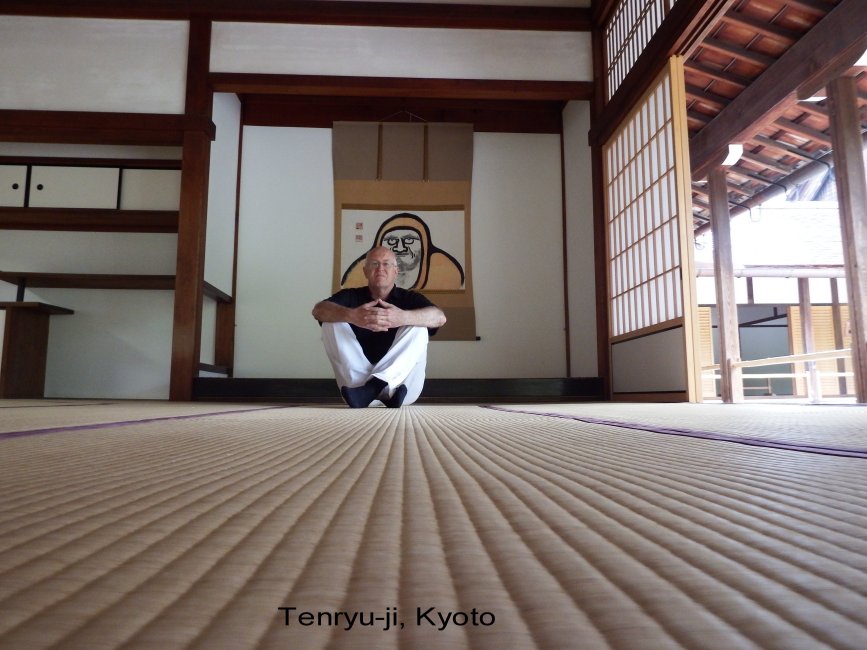 (click on picture to enlarge) |
A kakemono
(掛け物) or kakejiku (掛け軸) is a Japanese vertical
scroll painting. It is a sheet of paper or silk that
is painted or written on with ink or watercolor and
is held at the top and bottom by a round stick. Kakemonos are usually hung in specialized alcoves, named tokonoma. Kakemonos are usuallay arranged with an Ikebana, pottery, or other kind of piece of art. A tokonoma (床の間), literally bed alcove, is an essential element of the traditional Japanese tatami covered (rice-straw mat) rooms. |
||||
| Kami | 神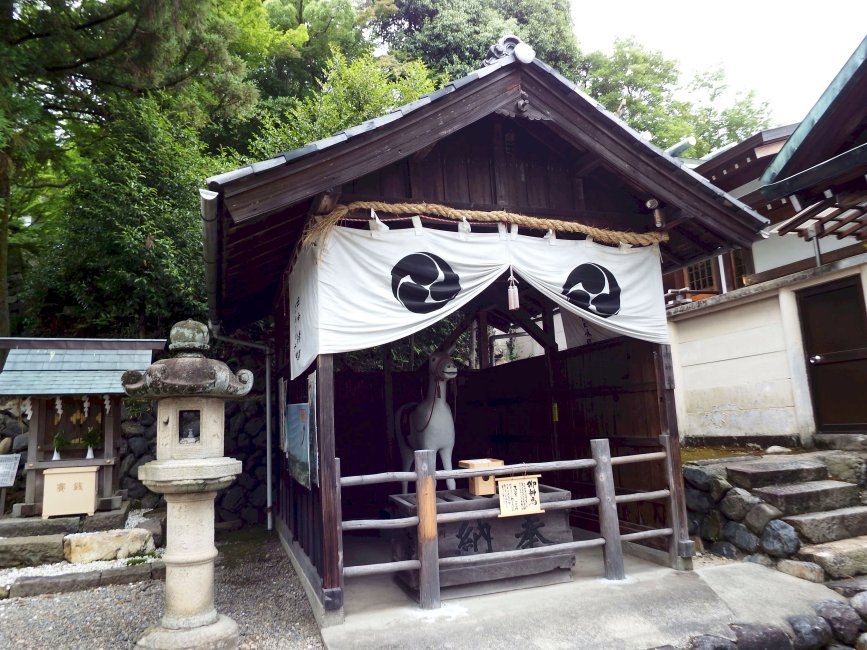 Horse Kami, Shinto shrine at the foothold of Inuyama Castle (click on picture to enlarge) |
kami (神)
are spirits or phenomena worshipped in Shinto. Kami may be landscapes,
elements of the landscape, forces of nature, all kinds
of beings and the qualities they express. They can
also be the spirits of revered dead. Traditionally,
great or sensational leaders like the Emperor could be
or become a kami. In Shinto, kami are not separate from nature, but are by nature possessing positive and negative and good and evil qualities. They are manifestations of Musubi, the unifying energy of the universe, and are considered of what humanity should strive for. It is believed that kami are "hidden" from this world and inhabit a complementary realm that reflects our own (Shinkai 神界, the world of kami). The ambiguity of kami's meaning is necessary because it reflects the ambiguity of kami itself. Kami ("神") is the same kanji character as "shin" in Shinto, but uses a different reading. |
||||
| Kamigata-e | 上方絵 | Kamigata-e is a style of ukiyo-e that was created from the Edo period to
the Meiji period. It refers to
ukiyo-e prints that were mainly produced in the
Osaka-Kyoto region making a comparison in contrast
to the urban culture of the Edo/Tokyo region.
Often used as a synonym for 'Osaka-Prints'. |
||||
| Kamuro |
禿 (かむろ) Kamuro ('Hage' is a mis-reading) 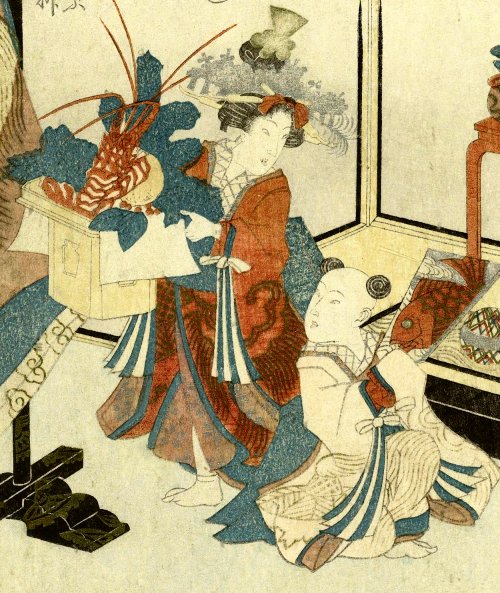 |
Kamuro refers to the
absence of hair on the head, a hairstyle cut to the
shoulders as a child, or a child with that hairstyle.
In the narrow sense, it refers to young girls living
in brothels during the Edo period. Kamuro were the
small girls who attended the great courtesans of the
Yoshiwara. Sold into service at the age of five to
nine, they paraded in their "elder
sister" courtesan's retinue when she appeared in
public, ran errands for her, and attended her when she
met with clients. Kamuro were potent status symbols.
These untrained little girls, with their country
accents and grade-schooler naughtiness, were reserved
as attendants to only the highest-ranking courtesans
(cf. to Oiran) |
||||
| Kanadehon Chūshingura ("Copybook of the Treasury of Loyal Retainers") | 仮名手本忠
臣蔵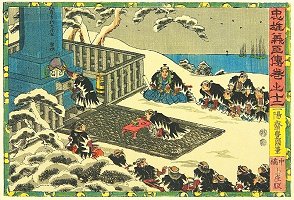 Utagawa KUNISADA "Dedicating the Head of Enemy" From the series, "Chuyu Gishin Den" (Story of Faithful and Courageous Followers). Act 12: Ronin are at the tomb of their ill-fated lord Enya. They dedicated Kira's head to the tomb and reported to the late lord that the revenge had been accomplished. |
The story of the
'Chūshingura' (literally, the 'Loyal League'), is
better known in the West as the 'Forty-Seven Ronin'.
"Kana dehon Chūshingura" is originally an 11-act
bunraku puppet play composed in 1748. It is one of the
most popular Japanese plays overall. It was an epochal
turning point in the conversion of the Ako Incident of
1701-03 and the story of the Revenge of the 47
Ronin (set masterless Samurais) into Japan's
national legend. The 47 Samurai's Lord Asano of Akô ('Lord Enya'), had been tricked into dispersing his loyal retainers (samurai) and committing seppuku (suicide) by the corrupt elder court official Kira Yoshinaka. Lord Asano's 47 loyal Samurai who have been now forced to become Ronin, nurse their anger and outrage, each becoming the personification of the samurai spirit, until the time is right to avenge their dead lord's honor. Nevertheless, the Shogun could not permit the retainers to go unpunished because the vengeance represented a choice between loyalty to a vassal lord versus that to the supreme ruler, the shogun. The retainers were ordered to commit collective suicide and complied. |
||||
| Kanji | cf "Reading"
|
|||||
| Kanō School | 狩野派 |
The Kanō School (狩野派, Kanō-ha) of
painting was the dominant painting style from the late
15th century until the Meiji period.The school
initially reflected a renewed influence of Chinese
painting, but developed a colorful and firmly defined
style for large panels that decorated the castles of
the nobility and reflected distinctive Japanese
traditions. also cf. to Shijo |
||||
| Kibyōshi | 黄表紙 | Kibyōshi (黄表紙) are picture books
produced during the middle of the Edo period, to the
early 19th century. Most of them are identifiable by
their yellow-backed covers. Kibyōshi were typically
printed in 10 page volumes, many spanning two to three
volumes in length, with the average number of total
pages being 30, thus considered to be the first adult
comic books in Japanese literature. A large picture
spans each page, with descriptive text and dialogue
filling the blank spaces in the image. compare with e-hon |
||||
| Kichijōten | 吉祥天 | The
goddess is also known as Kisshōten (吉祥天) or
Kisshoutennyo (吉祥天女), and is adapted via Buddhism from
the Hindu goddess Laxmi. She sometimes replaces
Fukurokuju as one of the seven Fukujin. Kichijōten is
distinguished from the other Fukujin goddesses by the
Nyoihōju gem (如意宝珠) in her hand. When Kichijōten
replaces Fukurokuju, and Daikoku is regarded in
feminine form, all three of the Hindu Tridevi
goddesses are then represented among the 'Seven Gods
of Fortune' . Also refer to 'Seven Gods of Fortune' and 'Fukurokuju'. |
||||
| Kimono | 着物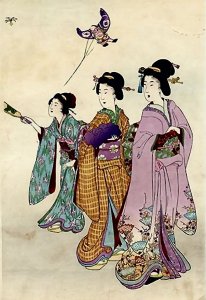 |
Kimono,
literally "wearable thing" are the traditional clothes
of Japan. Originally for any kind of clothes for men
and women. Usually worn with a broad cloth belt, named
'obi' and wooden sandals, named 'geta'. The sewing pattern always follows a standard outline. In response to specifig situations (gender, social status, profession etc.), color, patterns and sleeves may vary. For cleaning and repair, different parts of the kimono originally have only been loosely stitched together. Also refer to Yukata |
||||
| Kintaro |
金太郎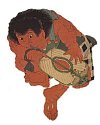 |
Kintarō, often
translated as "Golden Boy", is a folk hero from
Japanese folklore. A child of superhuman strength, he
was raised by YAMAUBA, a mountain hag on Mount
Ashigara. He became friendly with the animals of the
mountain, and later, after catching Shuten-dōji, the
terror of the region around Mount Ooe, he became a
loyal follower of Minamoto no Yorimitsu under the new
name Sakata no Kintoki (坂田 金時). He is a popular figure
in noh and kabuki drama, and it is a custom to put up
a Kintarō doll on Boy's Day in the hope that boys will
become equally brave and strong. Cf the Utamaro print "Yamauba and Kintarō with a Kite" |
||||
| Kiri Seal |
桐紋
kiri-mon  |
Variation of the
leaf of the Paulownia imperialis (kiri) tree appearing
on the Japanese imperial crest, as Kuniyoshi's
personal badge and that of his school for a while |
||||
| Kite (bird) |
鳶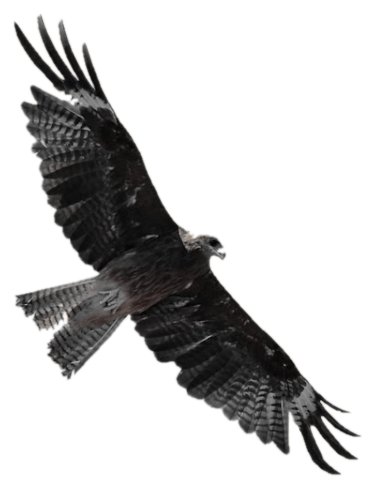 |
'Kite'
(Tonbi, 鳶)
in the English language refers to the largest common
Bird-of-Prey in the British Isles. These birds belong
to the family of Accipitridae, particularly in
subfamilies Milvinae, Elaninae, and Perninae. In the
early 19th century, merchants imported Bird-of-Prey
kites from their newly looted colonies and dependent
areas in Southern China. In absence of a better
descriptor for those imported big bird kites, they
used the term 'kite' instead. Therefore the
Bird-of-Prey Kite (Japanese: Tonbi-tako, 鳶凧) became a
synonym for these kinds of artificial flying objects
named 'kite'. |
||||
| Kite (flying
object) |
凧 | artificial flying
objects, plaything for children and for-ever-young
grown-ups |
||||
| Kite Kite |
鳶凧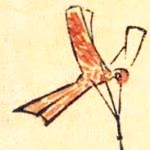 |
Tonbi-tako (鳶凧) (Hawk kite, Bird-of-Prey kite) is the
classical Japanese kite, often depicted on Ukiyo-e
prints |
||||
| Kitespool | 凧スプール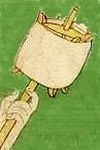 |
Kite spool (Tako supūru)
for winding up kite lines, used
all over SE-Asia. The classical Japanese variant is a
kind of spindle, also used for winding up knitting
wool. The spool may
be turned by using the thumb or index finger,
with the spool handle firmly gripped in the hand.
These kind of kite spool winders are only used for
smaller kites with thin lines. |
||||
| kitespool Kite | 凧スプール凧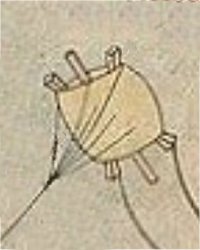 |
Kite spool Kite (Tako supūru-tako) | ||||
| Kite Line | 凧線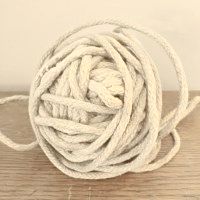 |
Traditional kite lines (凧線, Tako-sen) are made of hemp. Lines for small kites are wound up on a spindle.Thin lines for small kites are usually wound up on a kitespool winder. Larger lines are usually carried in a specialy designed basket. During kite battles, there are specialized line basket carriers, supporting the kite pulling crew. | ||||
| Kite line spindle | 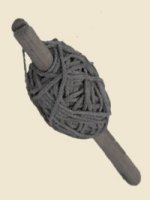 |
Kite line spindles or kite line balls are the most simple ways of winding lines. | ||||
| Kite line basket | 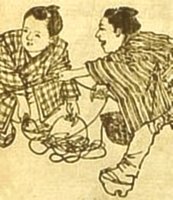 |
Kite line baskets
are used to carry the kite line during kite battles,
to support the line pulling crew. |
||||
| Koinobori or
Satsuki-Nobori |
鯉のぼり
or 五月幟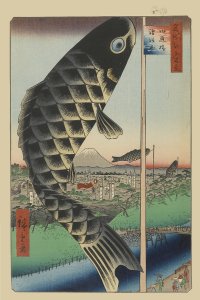 Suidō Bridge and
the Surugadai Quarter (水道橋駿河台 Suidōbashi Surugadai)
by Hiroshige, Print No 48(63) of his series 'One
Hundred Famous Views of Edo'
(Meisho Edo Hyakkei, 名所江戸百景) |
Streamer, often
falsely atrributed to be a kite. A Koinobori is a carp
streamer. Koi-Nobori (Carp'kite', 鯉のぼり), or Satsuki-Nobori (五月幟), literally 'Fifth Month Flag', are small windsacks or drogues, that fly in front of the houses at the Japanese boys' festival (May 5th). Traditionally, a boy is associated with the powerful carp, swimming with great endeavor against the current. Koinoboris are painted or printed on paper, cloth or other textiles. The colors of the Koinobori have a symbolic meaning. The big black carp stands for the father, the red for the mother and the blue carp for the sons. For girls, originally no flags were flown. Fifth of May is nowadays an official holiday in Japan, and is dedicated to all children, hence it's name 'Kodomo no Hi' (こどもの日) or 'Children's Day'. Therefore many families hang colorful carps for each of their children. In addition to the traditional color scheme, carps are increasingly common in all colors of the rainbow. also compare nobori |
||||
| Kotobuki |
寿 |
Kotobuki (lit. "long life" or ことぶき
in hiragana) is both a Japanese surname and a given
name. The character is identical with the Chinese
"shou". Kotobuki is one of the 'Three Star Gods' of
originally Chinese Mythology. Those three Gods in
Japanese mythology are amalgamated in 'Fukurokuju'
(福禄寿) one of the "Seven Lucky Gods" with a
tall bald head. In Daoist oriented Japanese Mythology, Jurōjin (寿老人) is a 'stand-alone' Lucky God of Longevity. Both appear as an old man. Jurōjin as single emanation, is considered the incarnation of the southern polestar (南極星 "nankyokusei"). |
||||
| Kumadori |
refer to Aragoto |
|||||
| Kuzazoshi |
草双紙 | Kusazōshi (草双紙, lit. (grassy
double pages') is a term that covers various genres of
popular woodblock-printed illustrated literature
during the Japanese Edo period (1600–1868) and
early Meiji period, and belong toworks of popular
fiction known as gesaku (戯作). These works were mostly
published in the city of Edo (modern Tokyo). The text
itself was mainly written in hiragana,
and were not of a high literary value. However, they
often provide a unique insight into the life,
customs, and interests of the ordinary people of it's
times. |
||||
| Lion Dancer | 獅子舞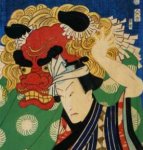 |
Lion Dance(r) (shishimai): Lion
Dance is a form of traditional dance in Asian
culture in which performers mimic a lion's
movements in a lion costume. The lion dance is usually
performed during the New Year and other traditional,
cultural and religious festivals. It may also be
performed at important occasions such as business
opening events, special celebrations or wedding
ceremonies, or may be used to honour special guests by
the communities. |
||||
| Mitate | 見立 |
Mitate (見立) is an imaginary performance, meaning that it is an imaginary scene with actors who never actually appeared together on stage in these roles. | ||||
| Mitate-e | 見立絵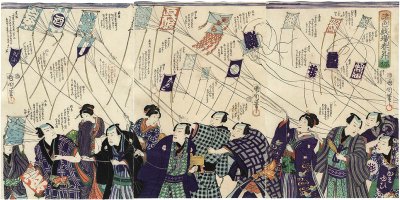 |
Mitate-e (見立絵) is a subgenre of
ukiyo-e that employs allusions, puns, and
incongruities, that appeal to the public's taste,
sense of humor, curiosity, etc., and is often used to
parody persons, classical art or events, politics and
politicians, sometimes even used to show critique in
order to circumvent censorship. (cf. KUNICHIKA, 'Flying Kites in Early Spring' |
||||
| Mitsui clan | 三井 家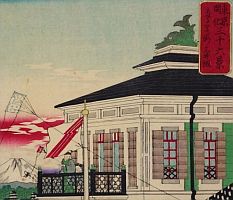 |
Mitsui clan (三井家
Mitsui-ke) is one of the most powerful families of
merchants and industrialists in Japan. The Mitsui enterprise made its debut in 1673 when Mitsui Takatoshi (1622–1694), son of a sake brewer, established Echigo-ya, a dry goods department store in both Edo and Kyoto. Meeting with great success, Takatoshi extended his services to moneylending and exchange. In 1691 the Mitsuis were officially chartered as merchants of the Tokugawa shogunate which ruled during that time. Since the late Edo period, the Mitsuis were the richest and most eminent family in Japan, their business being thoroughly encouraged by the government of the time. In 1909, a Mitsui controlled holding company took over the business, with Mitsui thus becoming a zaibatsu (major holding, global player) of more than 150 companies operating financial, industrial and commercial industries. Mitsui is still one of the largest holdings worldwide. It's infamous rôle during Japanese colonial times and wars from 19th century onwards has still to be cleared. Different kinds of Mitsui enterprises have been depicted in kite woodblock prints by Hokusai, Hiroshige-III and Kuniyoshi and others. |
||||
| Momotaro ("Peach Boy") | 桃太郎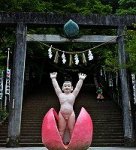 |
Momotarō is a
popular hero of Japanese folklore. His name translates
as Peach Tarō, a common Japanese boy's name, and is
often translated as Peach Boy. Momotarō came to Earth
inside a giant peach which was found floating down a
river, by an old, childless woman who was washing
clothes there. The woman and her husband discovered
the child when they tried to open the peach to eat it.
The child explained that he had been sent by Heaven to
be their son. The couple named him Momotarō, from momo
(peach) and tarō (eldest son in the family). Years later, Momotarō left his parents to fight a band of marauding oni (demons or ogres) on a distant island. En route, Momotarō met and befriended a talking dog, monkey and pheasant, who agreed to help him in his quest. At the island, Momotarō and his animal friends penetrated the demons' fort and beat the band of demons into surrendering. Momotarō and his new friends returned home with the demons' plundered treasure and the demon chief as a captive. Momotarō and his family lived comfortably from then on. |
||||
| Moku Hanga | 木版画 | Woodblock printing in Japan (木版画, mokuhanga) is a technique best known for its use in the ukiyo-e and for printing books. Moku-hanga technique differs in regard to Western printmaking, that it uses water-based inks, instead of oil-based inks. | ||||
| Monkeys, Three Wise Monkeys |
見ざる,
聞かざる, 言わざる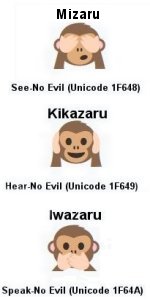 |
The concept of the
three monkeys originated from a simple play on words.
The saying in Japanese is mizaru, kikazaru, iwazaru
(見ざる, 聞かざる, 言わざる) "see not, hear not, speak not",
where the -zaru is a negative conjugation on the three
verbs, matching zaru, the modified form of saru (猿)
"monkey" used in compounds. Thus the saying (which
does not include any specific reference to "evil") can
also be interpreted as referring to the "Three Wise
Monkeys". According to other accounts, the monkeys caused the Sanshi and Ten-Tei not to see, say or hear the bad deeds of a person. The Sanshi (三尸) are the "Three Corpses" living in everyone's body. The Sanshi keep track of the good deeds and particularly the bad deeds of the person they inhabit. Every 60 days, on the night called Kōshin-Machi (庚申待), if the person sleeps, the Sanshi will leave the body and go to Ten-Tei (天帝), the Heavenly God, to report about the deeds of that person. Ten-Tei will then decide to punish bad people, making them ill, shortening their time alive, and in extreme cases putting an end to their lives. Those believers of Kōshin who have reason to fear, will try to stay awake during Kōshin nights. This is the only way to prevent the Sanshi from leaving their body and reporting to Ten-Tei. The three Wise Monkeys als even available as 'Emoji' logos as 'Unicode Characters' |
||||
| Monshō-tako |
refer to Coat-of-Arms Kite |
|||||
| Musha-e | 武者絵 Musha-e by Kunisada (Samurai) |
Musha-e are images of samurai and other kinds of warriors from Japanese history and mythology | ||||
| Nagasaki
Hata or Nagasaki Flag kite |
長崎幡凧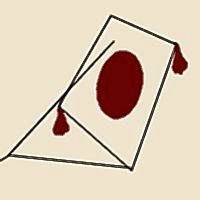 |
Nagasaki Hata or Nagasaki
Flag kite (Nagasaki hata tako) is derived from the
'Malay Kite', and resembles a slightly streched
square, flown 'on tip'; the Nagasaki Hata is a typical
Fighter Kite, often painted with emblems of the City
or Region of the fighting team. The Kite is a single
line fighter kite, and is flown with a glasspowder
kiteline ('Manja'), often without tassles, and always without tail. The Nagasaki Hata is not a traditional Japanese kite. Nagasaki was for some hundred years one of the only Japanese harbours to foreigners. The kite and the fighting techniques were imported from outside Japan. |
||||
| Ninja | 忍者 or
忍び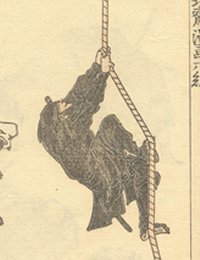 |
A ninja (忍者), or
shinobi (忍び) literally a 'concealed one' was a
specially trained covert agent, mercenary, or fighter
of pre-industrial Japan who was used as a spy,
saboteur or assassin. Female ninja are called Kunoichi. The functions of the Ninja included espionage, sabotage, infiltration, assassination and guerrilla warfare. "otokodate" or "street knights", sometimes were also called "ninja". They protected local people from outlawed or marauding samurai (cf. 'ronin' and samurai). |
||||
| Niyoi (Nyoi) |
如意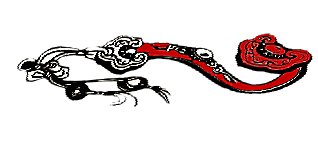 |
The Niyoi (Nyoi, 如意) is a
ceremonial tool that monks have in their hands for
reading sutras and sermons. It is shaped like a
grandson's hand and, like a scepter, is used to
correct authority and prestige. Originally a tool for
scratching the back like a grandson's hand, it reaches
the itchy place as desired (as you wish), so it is
called Nyogi, or like the Chinese original "RuYi"
(identical characters, different reading). |
||||
| Nihonga and Yoga |
日本画 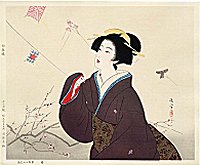 KABURAGI Kiyokata, First Easterly Winds |
Nihonga, literally "Japanese
Painting" refers to a style introduced in 1890 by the
American orientalist Ernest Fenollosa and the Japanese
art historian Okakura Kakuzō with the aim of
preserving traditional Japanese painting in a
modernized form during the time of upheaval. The characteristics of the Nihonga are:
|
||||
| Nishiki-e | 錦絵 | Nishiki-e
("brocade picture") refers to Japanese multi-coloured
woodblock printing. Previously, most prints had been
in black-and-white, coloured by hand, or coloured with
the addition of one or two colour ink blocks. A
nishiki-e print is created by carving a
separate woodblock for every colour, and using
them in a stepwise fashion. |
||||
| Nobori |
幟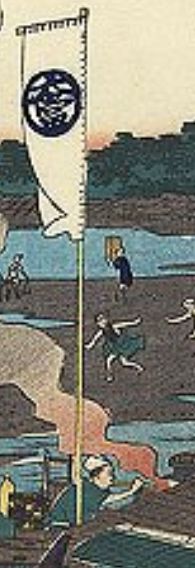 |
A Nobori (幟) is a typical Japanese
banner, in feudal times used to present military
units. The long and narrow flag, is
attached to a pole with a cross-rod to hold the fabric
straight out and prevent it from furling around the
rod. Today often used for advertising purposes. also compare koinobori |
||||
| Noh (Nō) |
能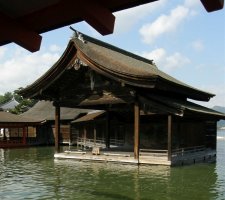 Floating Noh-Stage in Itsukushima (World Cultural Heritage Site) 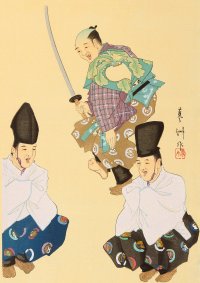 Intermittent Kyogen Performance (Noh-Play) |
Noh (能 Nō), or Nogaku (能楽 Nōgaku)
is derived from the Sino-Japanese word for "skill" or
"talent"—is a major form of classical Japanese musical
drama that has been performed since the 14th century.
Developed by Kan'ami and his son Zeami, it is the
oldest major theatre art still regularly performed
today.Traditionally, a Noh program includes five Noh
plays with comedic kyōgen plays in between; an
abbreviated program of two Noh plays and one kyōgen
piece has become common in Noh presentations today. An
okina (翁) play may be presented in the very beginning
especially during New Years, holidays, and other
special occasions. Noh is mainly influenced by
Buddhistic traditions. The less formal and generally
secular version of theatre entertainment is "kabuki". Noh is often based on tales from traditional literature with a supernatural being transformed into human form as a hero narrating a story. Noh integrates masks, costumes and various props in a dance-based performance, requiring highly trained actors and musicians. Emotions are primarily conveyed by stylized conventional gestures while the iconic masks represent the roles such as ghosts, women, children, and old people. Written in ancient Japanese language, the text "vividly describes the ordinary people of the twelfth to sixteenth centuries". Having a strong emphasis on tradition rather than innovation, Noh is extremely codified and regulated by the 'iemoto' system. Intermittent plays (Kyogen) try to make the Noh play more interesting to the spectators. |
||||
| Noren | 暖簾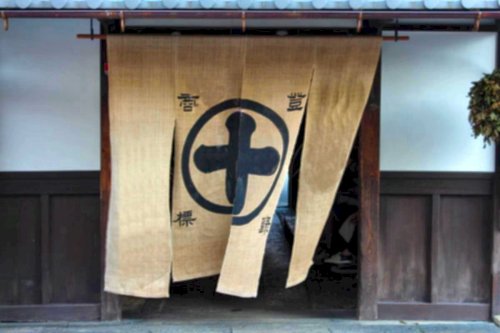 |
Noren (暖簾, のれん) is a traditional
Japanese curtain that is hung in rooms, door frames or
windows. Known since the Heian period, Noren initially served as shade providers. With the advent of larger shops in the Muromachi period, Noren were placed above the entrance door to make it easier for customers to enter and exit. |
||||
| Oban | 大判 | Ōban or "Large
format" print size about 39 by
26.5 cm (15½" by 10½"); the most common
format for ukiyo-e prints. |
||||
| Obi | 帯 or
おび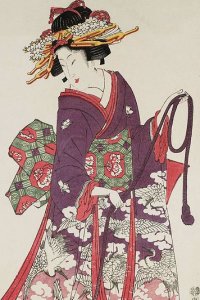 |
Obi (帯, おび) is a
sash for traditional Japanese dress, keikogi (uniforms
for Japanese martial arts), and part of kimono
outfits. The word 'obi' is derived from Kyoto dialect
for 'kimono'. The obi for men's kimono is rather
narrow, 10 centimetres wide at most, but a woman's
formal obi can be 30 centimetres wide and more than 4
metres long. Originally, all obi were tied in the
front. Also refer to kimono and yukata. |
||||
| Octopus Kite |
鮹凧 'or' たこカイト
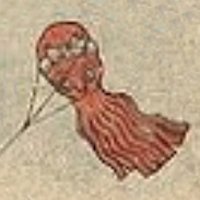 |
Octopus Kite (Tako-tako) | ||||
| Okame and Hyottoko |
阿亀
(おかめ)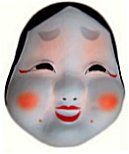 火男 (ひょっ とこ) 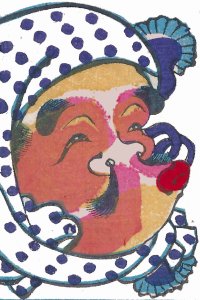 |
Okame means
"Tortoise", and is a lucky symbol for long life. She
is the goddess of dawn, mirth and revelry. Her symbols
are masks and good-luck charms. In Japanese art, Okame
is portrayed as simple and somewhat homely. Her domain
is the beautiful energy of good fortune and kind acts.
In this form, Okame gently reminds us that true beauty
really does come from within. Local lore claims that
any area that bears a mask of Okame's likeness is
blessed with her lucky nature. Her full cheeks and merry eyes are an unforgettable sight and a delight to behold. The full cheeks are often interpreted as a sign of 'mumps'. Jokingly, children who contracted mumps were told they were 'Okame'. Some Japanese scholars theorize that long ago, when the first Okame images were created, they may have represented an idealized form of feminine beauty. The male counterpart of 'Okame' is 'Hyot(t)oko' (火 男 or ひょっとこ), always depicted with his puckered and bent look, and always wearing a scarf with blue dots |
||||
| Oiran |
花魁 |
Oiran, literally "The
most beautiful of all flowers", was the common name
for high-ranking prostitutes in the licensed brothel
district Yoshiwara from about 1770 in Edo in today's
Tokyo. In today's language, the term "courtesan" is
used as the euphemic term for prostitutes in general.
High ranking Oiran are often accompanied by child servants The apprentice girls are named 'kamuro'. also refer to Bijin |
||||
| Omocha-e (Toy Print) |
玩具絵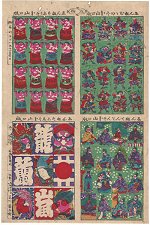 |
Omocha-e or toy prints
(玩具絵, おもちゃ え)
are ukiyo-e that children may play with. They're like
the supplements that are sometimes included in a
children's magazine. These are pieces that can be cut
and pasted to make a picture or a toy. Refer also to Harimaze |
||||
| Oniyozu | 鬼 (鬼ヨズ)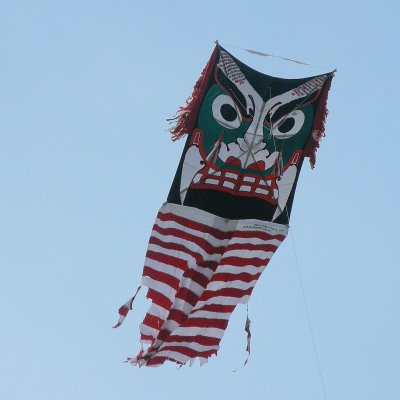 Oniyozo kite in the Mishima Island Sky The Oniyozo is a guardian demon for newborn boys. (Click on picture for more infrmation!) |
Oni (鬼) are commonly
thought of as Japanese demons (yokai, 妖怪) . The
original meaning of the kanji character "鬼" is
"soul of the dead." The character Oni (鬼) is sometimes used as an article meaning 'strong', 'bad', 'scary', 'big', and 'terrible' from the image of a strong demon (youkai). Demons are generally drawn having two horns on their heads, fine curly hair, fangs in their mouths, sharp claws on their fingers, and a loincloth made of tiger skin. There are five skin colors : blue, red, yellow, green, and black. These 5 colors are said to be a combination of the theory of the five elements and the theory of the five lids. Oni may also be a kind of guardian demon for newborn boys. |
||||
| Otokodate |
男伊達 Five Heroes by KUNISADA-II |
"Otokodate" (otoko date, 男伊達) or
"street knights", were sometimes also called "ninja".
During the Edo period, the samurai class was still adjusting to peacetime daily routines and frustrated at the loss of status and utility. Bored and idle, they frequently caused trouble in towns and engaged in street fights and robberies. At the same time, the common otokodate (road knights) among merchants gained confidence in their strength and were employed by the local population for protection from outlawed or marauding samurai (cf. "Ronin", "Samurai" and "Ninja" and in more detail in a short essay about otokodate. |
||||
| Otoshidama (Ootoshidama,
Toshidama- Toshidama-in) |
年玉印 (Ootoshidma-in)
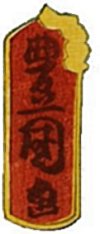 |
Characteristic
round seal, sometimes oval or stretched, seen on many
nineteenth century Japanese prints is called an
(O)Toshidama Seal. It was used at some point by most
artists of the Utagawa School. At first it looks like
the silhouette of a diamond ring with four stones;
what it actually represents is a twist of cloth with
four coins inside it and it is called a Toshidama or
Otoshidama. The tradition comes from a ritual in which
round rice cakes were offered to the god of the year;
some of the cakes were also distributed and eaten by
worshippers and their families. The word derives from
tama, meaning round and also spirit. |
||||
| Reading | 漢字 (Kanji)
平仮名 or ひらがな (Hiragana) 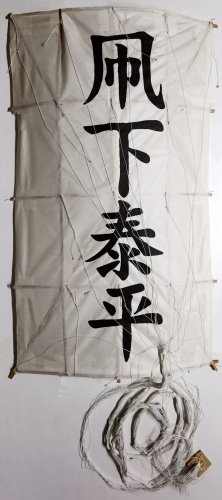 Peace under the Kite (Tako-ka taihei, 凧下泰平) my personal Edo Kanji Kite (60 X 90cm) |
Japanese may be more or
less completely written in Hiragana characters
(平仮名 or ひらがな). For ambiguous 'historical' reasons the
ruling bourgeoisie likes to use Kanji characters.
錦樹堂 comprised of Chinese
characters, and may be phonetically read in several
ways. The most prominent ways are the 'On-reading'
(読 み み, on-yomi), and the 'Kun reading' (読 み み,
kun-yomi) 'On-reading' is a term from the Japanese script and refers to a class of pronunciations for the Chinese characters (kanji) used in Japan, which resemble the sound of the corresponding Chinese word; Hence also the term sinojapanese reading. Many characters also have several of these pronunciations. The 'Kun reading' denotes a class of pronunciations for the Chinese characters (kanji) used in Japan, most of which have several such pronunciations (Go-On, Kan-On, Tō-On, Kun). In the case of Kun readings, the pronunciation of the word already present in Japanese for this concept, was assigned to a Kanji taken over from its meaning. With the Chinese pronunciation of Kanji this has mostly nothing to do, since Old Japanese and Old Chinese are not related or even similar languages. Therefore, in contrast to the Sino-Japanese (Chinese-Japanese) On-reading, the Kun reading is also referred to as the purely Japanese reading. Literally prominent example of misreading is the name for 'Mount Fuji'. Correctly written it should be 'Fuji-SAN', but quite often it is misread as Fuji-YAMA'. |
||||
| Retainer, Loyal |
refer to 'Ronin' |
|||||
| Rickshaw |
人力車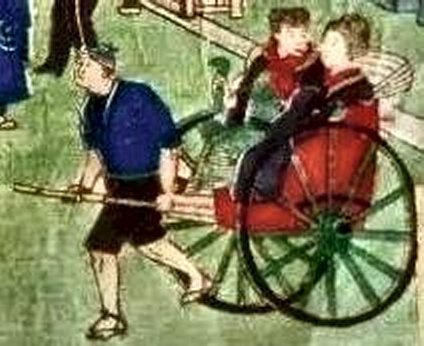 Hiroshige-III, 'Mitsukoshi Store' |
A rickshaw, or
JinRickShaw ( lit.: Man Force Cart, 人力車) is most often a man
drawn two wheel cart, for usually carrying one single
passenger. Rickshaws were independently invented in
Japan circa 1869, after the lifting of a ban on
wheeled vehicles from the Tokugawa period (1603–1868), |
||||
| Rokaku, Sanjo
Rokaku |
三条六角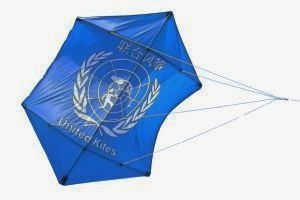 |
A Rok(k)aku, or correctly
'Sanjo Rokakku' (Kite) is a kite from the City of
'Sanjo' in Niigata. Literally 'Rokaku' means hexagon.
The kite is the most abundant Japanese kind of kite all over the Globe. The kite is also famous to be a good maneuverable fighting kite. |
||||
| Ronin | 浪人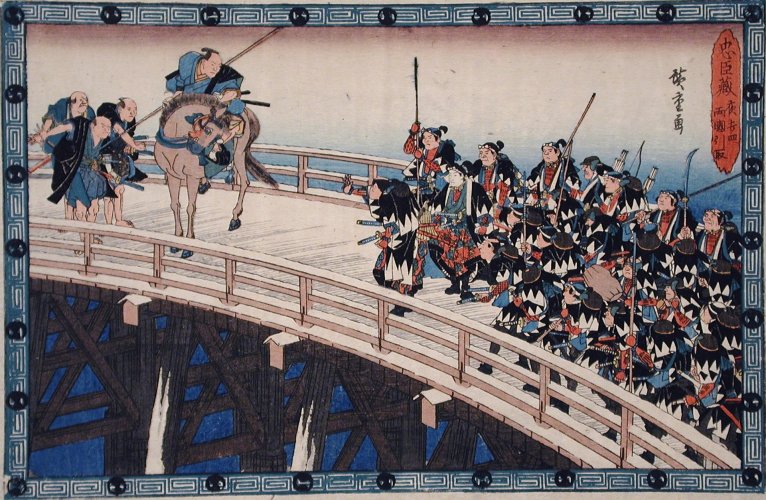 Hiroshige, Ako Incident (47 Ronin) |
A Rōnin, literally
"drifter" or a "wanderer", also Rō hito
(dangerous prisoner, 牢人). A Rōnin
was a samurai with no lord or master during the feudal
period (1185–1868) of Japan. A samurai became
masterless from the death or fall of his master, or
after the loss of his master's favor or privilege. Not all of them became heroes, as often idealized in tales. Without master and proper income, they sometimes were marauding the country. The word rōnin literally means "wave man". It is an expression for "vagrant" or "wandering man", someone who is without a home. The term formerly referred to a serf who had fled or deserted his master's land. It then came to be used for a samurai who had no master. Even popular in the Western Hemisphere is the Story of the 47 Ronin |
||||
| RuYi | refer to Nyoi |
|||||
| Sakano-tako |
refer to Fish Kite |
|||||
| Sakura |
桜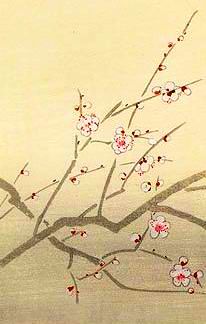 |
The Japanese cherry blossom (桜 sakura) is one of the most important symbols of Japanese culture. It stands for beauty, awakening and transience or "mono no aware" (物 の 哀 れ, も の の あ は れ), literally "the pathos of things". The cherry blossom season marks a high point in the Japanese calendar and the beginning of spring. The blossom is a symbol of feminine beauty in Japan. Cherry blossoms symbolize clouds due to their nature of blooming en masse, besides being an enduring metaphor for the ephemeral nature of life, an aspect of Japanese cultural tradition that is often associated with Buddhist influence. The festivity of admiring the blossoming Cherrytrees (plum trees) is called "Hanami" (花見, literally "flower viewing"). | ||||
| Samurai | 侍_Senzaki-Yagoro-Minamoto-no-Noriyasu.jpg) YOSHITORA (1864) Senzaki Yagoro Minamoto no Noriyasu |
Samurai (侍) literally, "one who
serves"; also Shi (master, first class military rank,
士) or Bushi (master of military, 武士). Sometimes
Tsuwamoto or Hei (soldier, 兵). A Samurai is a member
of the warrior class. The samurai lived by elaborate
social and military codes, part of which was called
Bushi-dō (武士道), literally "way of the warrior". If a
Samurai lost his loyal master, he became a Rōnin. Also refer to otokodate. |
||||
| Sanjo Rokaku | refer to 'Rokaku' |
|||||
| Sensō-e | 戦争絵 | Sensō-e are wartime prints. In
Ukiyo-e-terms, these works documented the First
Sino-Japanese War of 1894-1895 and other imperialistic
aggressions. |
||||
| Sensu-tako |
refer to Fan Kite |
|||||
| Seven Gods of Fortune or 'The Seven Lucky Gods' |
七福神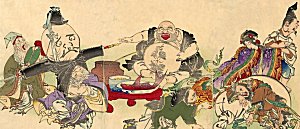 |
'The Seven Lucky
Gods' or 'Seven Gods of Fortune' (shichifukujin, 七福神)
are believed to grant good luck to it's believers. It
is known that these deities have their origins in
ancient gods of fortune: from the Hinduism practiced
in Nepal and India (Benzaiten,
Bishamonten, Daikokuten); and from the
Chinese Taoism and Buddhism (Fukurokuju,
Hotei, Jurojin),
except for Ebisu, who has a
Japanese ancestry. The worship of this group of gods
is also due to the importance of the number seven in
Japan, which is supposedly a lucky number. Also refer to Benzaiten, Bishamonten, Daikoku(ten), Ebisu, Fukurokuju, Hotei, Jurōjin or Kichijōten respectively. Okame, the Goddess of Dawn, Mirth and Revelry is also often to be seen together with the Seven Gods of Fortune. |
||||
| Shamisen |
三味線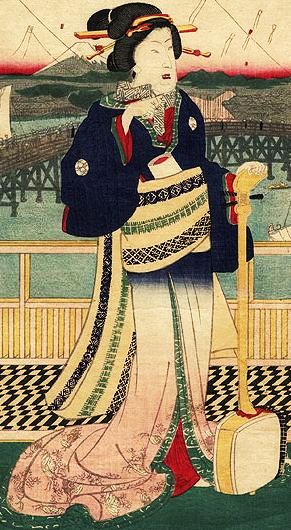 |
The shamisen
or samisen (三味線, literally "three strings"), also
called sangen (三絃, literally "three strings"), is a
three-stringed, Japanese musical instrument derived
from the Chinese instrument sanxian. It is played with
a plectrum called a bachi. The shamisen can be played solo or together with other shamisen, in ensembles with other Japanese instruments, with singing such as nagauta, or as an accompaniment to drama, notably kabuki and bunraku. Both men and women traditionally played the shamisen. |
||||
| Shijō | 四条派 | The Shijo school is a large sect
in the Japanese painting world. Around the middle of
the Edo period, it was founded by Goshun (Gekkei
Matsumura), and became a major force in the Kyoto and
Osaka art world. Shijo is focusing on realistic
depictions of everyday life and landscapes. Artists
portrayed subjects with a naturalistic style,
contributing to the development of realism in Japanese
art, as shown in Western realism at that time. The
impression continues to this day. also cf. to Kano school |
||||
| Shimenawa |
注
連縄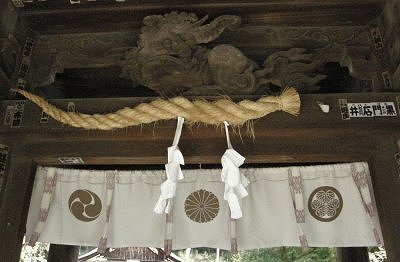 |
"Shimenawa" (注連縄,
more rarely 標縄 and 七五三縄) are ropes of rice straw,
which separate the world of the gods (Kami) from the
real world, used for ritual purification in Shinto.
Such ropes are usually found at Shinto shrines, torii
and other kinds of sacred places. Some
Shimenawa are no thicker than a common thread, others
can reach diameters of more than two meters and weigh
several metric tons. Even private home
shrines (Kamidana) are decorated with Shimenawa. Shimenawa are usually decorated with zigzag paper cuts and especially folded paper strips (shide). These hangers have a purifying, but also decorative and indicative meaning . |
||||
| Shin Hanga |
新版画 | "Shin hanga"
style and "sosaku hanga" style are developed after the
Meiji era. The "shin hanga" period flourished between
1915 to 1942. After the second world war "shin hanga"
had a brief revival between 1946 until the mid 50ies.
For more detailed information please refer to "More About Classical Japanese Woodblocks With Kites". |
||||
| Shinto | 神道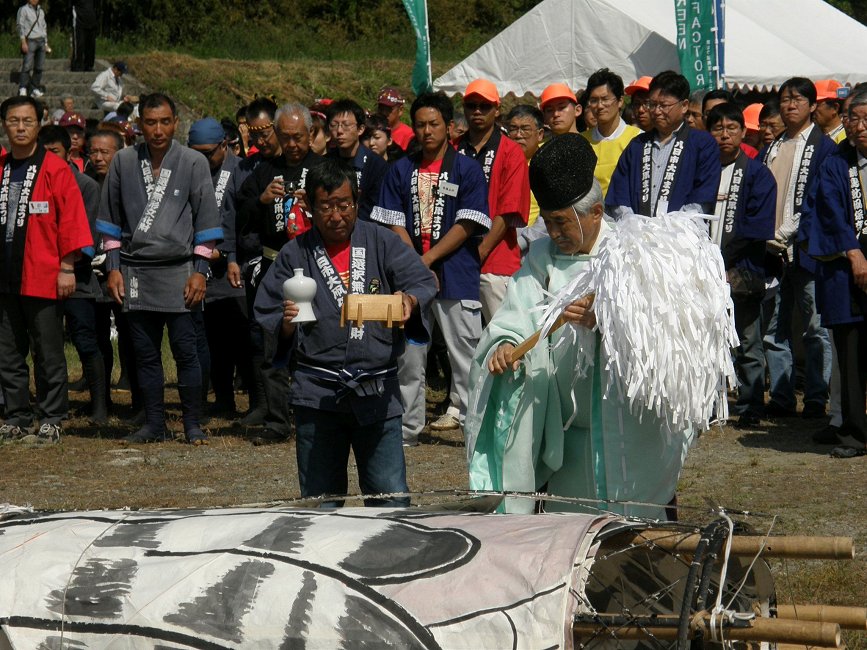 Blessing the Kite at 'Yokaichi Large Kite Festival' All kinds of local and nationwide dignitaries watching the blessing ceremony by the Shinto priest (click on photo for details) |
Shintō (神道) literally "Way of the
Gods") is the autochtonous animistic religion of
Japan. The objects of worship are numerous deities and souls of the dead, or natural phenomena called kami. A special part of the tradition is the worship of natural objects, each of which has its own kami. Shinto has a developed temple system and a number of common rituals. At the same time, there is no complex theology, ethical precepts, and canonized scripture. Kami ("神") is the same kanji character as "shin" in Shin-to, but uses a different reading. The connecting symbol for a shinto place of worship is the "torii". |
||||
| Shoji-tako |
refer to Square Kite |
|||||
| Shunga |
春画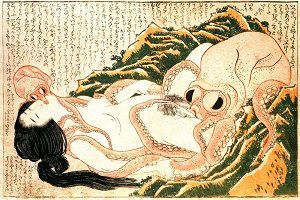 HOKUSAI, "The Dream of the Fisherman's Wife" |
Shunga (literally 'joyful picture'
or even 'springtime picture') is a wide range of
erotic art. It covers plain pornography up to
religious meditation, for instance the decay of life
and the transience of eros (“Kusō-zu”, 九想図, lit. "in
nine stages to soil"), sometimes must be interpreted
as a meditative Buddhist exercise on the temporary
nature of being. "Shunga" was enjoyed by both men and women of all classes. It was traditional to present a bride with ukiyo-e depicting erotic scenes from the "Tale of Genji". "Shunga" may also have served as sexual guidance for the sons and daughters of wealthy families. The most famous "shunga" might be HOKUSAI's "The Dream of the Fisherman's Wife" , literally "Octopus and Sea Maid" ("Tako to ama", "蛸と海女"). |
||||
| Shōgun | 将軍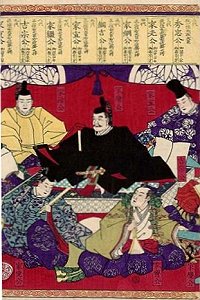 YOSHITORA, "The Tokugawa Shoguns" ("Tokugawa-ke godaiki"), 1875 |
Shōgun,
complete title 'Seii Taishōgun' (征夷大将軍) roughly
"barbarians subduing Generalissimo) was a Japanese
military title for leaders from the warrior's nobility
of the samurai. Originally, a Shogun was about a
European duke, and was only temporarily called upon to
deal with enemies on this special position. At the end
of the Heian Era in 1192, the influential noble
Minamoto Yoritomo succeeded in receiving this as
hereditary title from the Emperor. During the
following centuries, the Shogunate became the
governing power of Japan, and left the emperor only a
ceremonial function. The Shōgunate initially referred only to the household, later also to the administrative apparatus of the Shōgun. In Japanese, it referred to itself as 'kōgi' (公儀), literally "official affairs", i.e. 'central government' or, as the 'bakufu' (literally "tent government", "幕府") in the sense of "military government". Until 1868, the effective power was in the firm grip of the Tokugawa Shogun. |
||||
| Sode Kite | 袖凧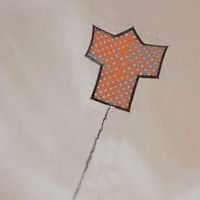 |
'Sode' means
sleeves of a Japanese Kimono. Thus the shape of
Sode-dako resembles a Japanese kimono. This kite has
most often a large hummer on the top of kite. It needs
a strong wind for a stable flight. Originally, the 'Sode 'is build and flown to pray for a newborn boy's future happiness and health. |
||||
| Soga Brothers, Tale
of |
曽我物語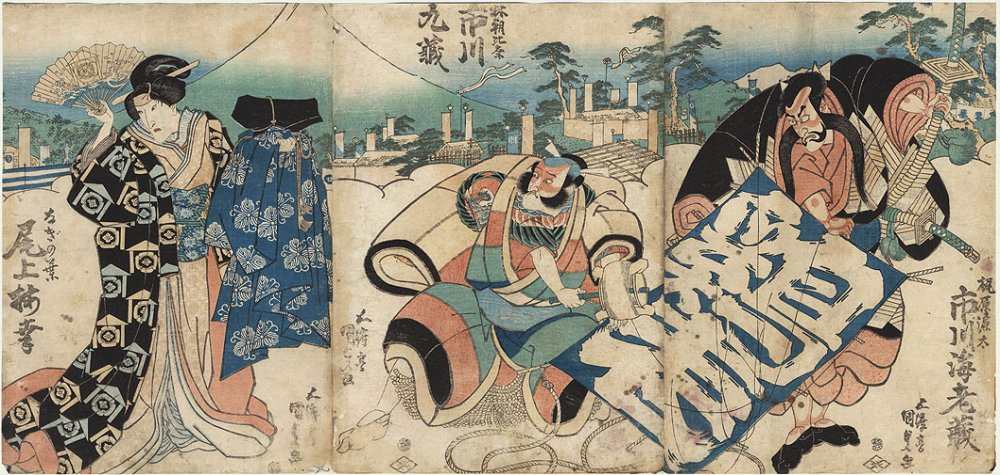 |
'Soga Monogatari' is the story of
the Soga brothers, Soga Gorō (曾我五郎) and Soga Jūrō
(曾我十郎), who seek their father's murderer Kudō
Suketsune (工藤祐経) in order to kill him and avenge their
father. Kudô had been a retainer to the Shogun
'Minamoto no Yoritomo', making Yoritomo a possible
target for revenge as well. Though initially concerned
about this possibility, Yoritomo is said to have
commented on the brothers' bravery, and to have been
so moved as to desire to pardon Soga Gorô, the
surviving brother. Suketsune's son, Inubômaru,
protested however, and in the end, Soga Gorô was
formally executed. Strongmen Kobayashi Asahina (小林朝比奈)
is a main character and friend to the Soga brothers. Strongman Asahina (Asahina Yoshihide, 朝比奈 義秀) is one of their main supporters during the Soga Brother's fights. The Soga Brothers story was first compiled after 1266, and has been rewritten throughout today in many variations. |
||||
| Sosaku Hanga | 創作版画 | "Sōsaku hanga" style next to "shin
hanga", is one of the two art movements which
developed in the realm of Japanese wooblocks at the
beginning of the 20th century, directly after the
Meiji era. Important features of "sōsaku hanga"
principles are "jiga" (self drawn), "jikoku" (self
carved) and "jizuri" (self printed). For more detailed information please refer to "More About Classical Japanese Woodblocks With Kites". |
||||
| Square Kite | 障子凧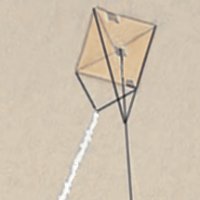 |
A Square Kite
(Shōji-tako), as Shoji-tako (literally 'sliding door
kite') is flown with the broad side up, and not 'on
tip'. Therefore a 'Square kite' has two tails instead
of on tail at the lower tip, ore one tail, tied with a
compound (triangle) bridle line. also refer to 'Nagasaki Hata' and 'Tosa' |
||||
| Sugoroku |
双六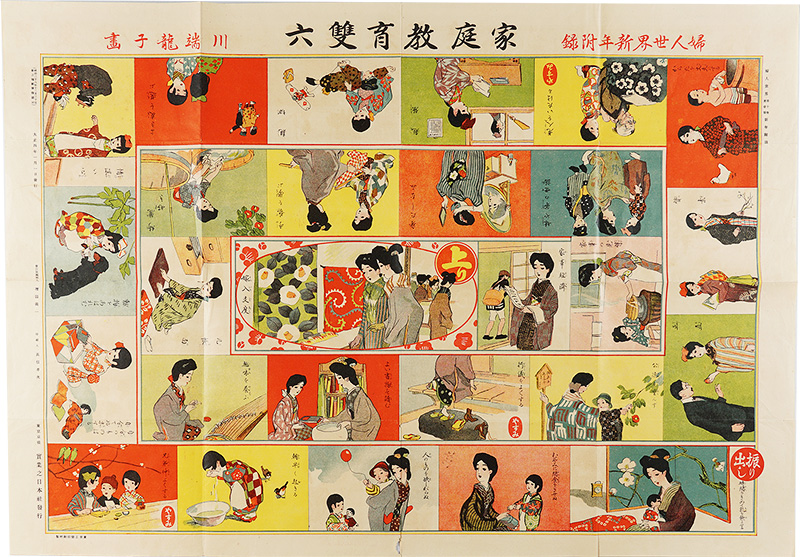 |
Sugoroku (双六) is a board game in
which you roll a dice and advance the pieces in the
squares according to the rolls to bring them closer to
the top. There are two types of sugoroku: Ban-sugoroku (盤双六, ばんすごろく), in which two players play against each other, and E-sugoroku (絵双六, え すごろく), in which multiple players compete and aim to rise. In the Edo period, both Sugoroku types were simply called Sugoroku, causing confusion. The board Sugoroku (盤双六) was abolished at the end of the Tokugawa shogunate, and nowadays, Sugoroku almost certainly refers to picture Sugoroku. Sogoroku prints as game boards refer to the latter type. |
||||
| Sumo |
相撲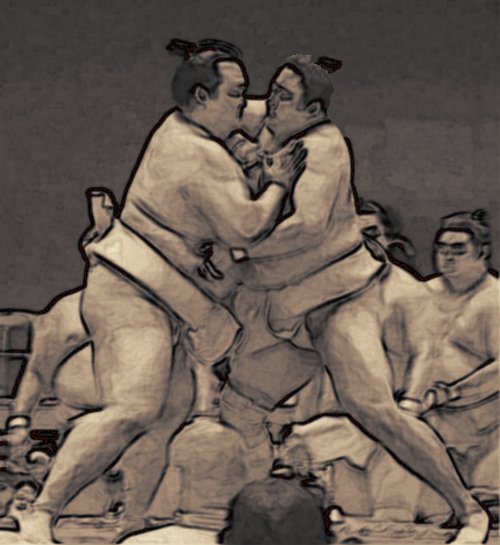 |
Sumo (sumō, 相
撲) literally "to strike each other"; sumo is
a competitive full-contact wrestling sport where a
rikishi (wrestler) attempts to force another wrestler
out of a circular ring (dohyō) or into touching the
ground with anything other than the soles of his feet.
The sport has a history spanning many centuries. Many ancient traditions have been preserved in sumo, and even today the sport includes many ritual elements, such as the use of salt purification, from Shinto. Life as a wrestler is highly regimented. Most sumo wrestlers are required to live in sumo training stables, known in Japanese as heya, where all aspects of their daily lives—from meals to their manner of dress—are dictated by strict tradition. |
||||
| Surimono |
摺物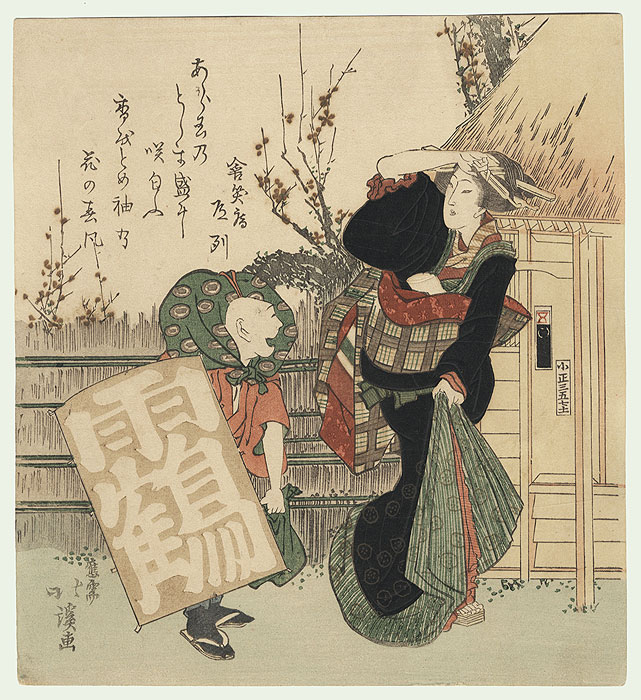 |
Literally "printed
thing". Surimono are an exclusive subcategory of
Japanese wood block prints. They were privately
commissioned works intended to be distributed to a
small audience of friends, colleagues or like-minded
members of a "poetry circle".The most common surimono
style included an image and a poetry
verse. Some surimono depict well-known stories
from ancient legend and are fantastic individual works
of art without any calligraphy. Because of the
exclusive nature of surimono, and the fact that they
were commissioned by wealthy individuals, the level of
workmanship was excellent. The designs are stunning,
and usually printed to the highest standards on
expensive paper with fine pigments and embellishments.
The carvers and printers were leaders in their fields.
Since surimono were not sold to a commercial audience
the print runs were very small and original surimono
are incredibly rare in the market today. Surimono were usually fairly small in size, with 19 x 21.5 cm being the most common dimension (cf. to 'Japanese paper formats'). |
||||
| Suruga kite |
駿河凧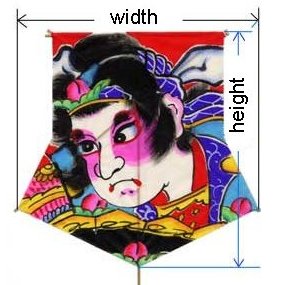 |
Suruga kites are said to have
originated during the Japanese Warring States period
when Yoshimoto Imagawa (1519-1560 AD) built and flew
them as a victory celebration from the top of the
Suruga Tower. The size of the kite is based on the size of old handmade Japanese paper and is about 42 x 43 or a multiple. It is also known as the 'Suruga squid kite' (駿河のいか凧) because of its unique irregular pentagon shape that looks like gills. |
||||
| Swastika |
卐
or 卍 |
In a Japanese
context, the swastika serves as a marker for Buddhist
entities (maps, signposts etc.). The
swastika (as a character 卐 or 卍) is an ancient
religious icon used in the Indian subcontinent, East
Asia and Southeast Asia, where it has been and remains
a sacred symbol of spiritual principles in Buddhism,
Hinduism, and Jainism. The Japanese name for the
swastika is "manji" |
||||
| Tako |
refer to Kite (bird) or Kite (flying object) |
|||||
| Tako Tako |
refer to 'octopus Kite' |
|||||
| Tanabata |
七夕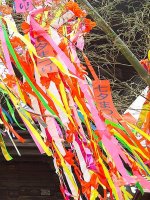 |
'Tanabata (七夕),
meaning "Evening of the seventh"), also known as the
Star Festival, is a Japanese festival originating from
the Chinese Qixi Festival (Double Seven Festival). It
celebrates the meeting of the deities Orihime and
Hikoboshi, represented by the stars Vega and Altair.
According to legend, the Milky Way separates these
lovers, and they are allowed to meet only once a year
on the seventh day of the seventh lunar month of the
lunisolar calendar. |
||||
| Tate-e | 縦絵 | Print in vertical
or “portrait” format (compare to yoko-e,
horizontally aligned) see 'Japanese Paper Formats' |
||||
| Tengu |
天狗 |
Tengu ("heavenly
dog") is a type of legendary creature found in
Japanese folk religion and are also considered a type
of Shinto god (kami) or yōkai (supernatural beings).
Although they take their name from a dog-like Chinese
demon (Tiangou), the tengu were originally thought to
take the forms of birds of prey, and they are
traditionally depicted with both human and avian
characteristics. Tengu nowaday nearly always bears a
long nose. |
||||
| Tokaido | 東海道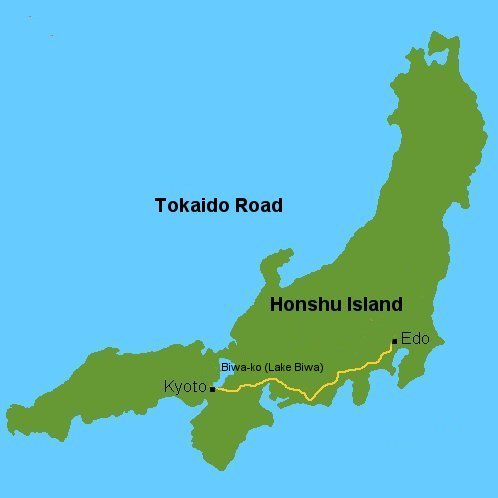 click on picture fore course of the Tokaido |
The Tōkaidō
(東海道 - literally, the 'Eastern Sea Road') was the main
road of feudal Japan. It ran for roughly five hundred
kilometers between the old imperial capital, Kyōto,
where the Emperor still lived, and Edo (nowadays
Tokiyo), home of the Shōgun as de facto military
ruler. The Tōkaidō ran more or less along the coast,
across the mountains, and around the southern end of
Lake Biwa. Fifty-three stations (宿場町 shukuba-machi) not counting the two termini, which became post-towns (shuku-eki) over time, were established along it; they consisted of horse and porter stations, along with a range of lodging, food, etc, establishments for the use of travellers. The horses were mainly for use by official messengers, but weary travellers could also hire horses, or kago (palanquins). Photo, more information |
||||
| 53 Stations of the Tokaido |
東海道五十三次 Hiroshige's 1855 edition |
Numerous artists displayd the '53
Stations of the Tokaido' (東海道五十三次, Tōkaidō
Gojūsan-tsugi). Japan's leading print designers of the
nineteenth century namely Hokusai,
Hiroshige,
Kuniyoshi, Kunisada,
Kyosai
and several others, each paired these 53 stations with
an intriguing design. Some of those collections
contain depictions of kites, mostly connected with the
stations of Fukuroi and Kakegawa. The article about "Tokaido" and "Tokaido-Series" gives a short overview |
||||
| Tonbi-tako |
refer to Kite Kite |
|||||
| Torii-tako |
refer to torii and Bird
Kite |
|||||
| Torii | 鳥居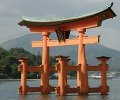 |
Torii , literally 'bird abode', is
most often a gate of a (shinto) shrine. The picture shows the world famous Itsukushima Torii. It stands in the shallow water off the island of Miajima in the Bay of Hiroshima. Itsukushima Shinto Shrine is a World Heritage Site. |
||||
| Tosa
Kite |
土佐凧 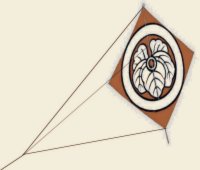 |
The square-sailed 'Tosa' is
similar to a 'Nagasaki Hata' as it is also flown 'on
tip'. The center spar is mostly always longer than the
kite sail. This popular kite often carries a crest, emblem or logo of a family, a kite klub or other kind of organisation. The kite takes it's name from the vast bay of Tosa on the south side of Shikoku island, within the Kochi prefecture. |
||||
| Yakko (Yakko Kite) |
奴 (奴凧)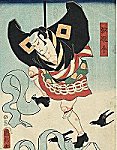 |
A Yakko is a
low-ranking footman serving a high-ranking samurai.
They lead their Lord cortege to free the streets with
their spears when he travels in the country. They are
key roles in many Kabuki dramas, helping either the
hero or the villain of the play and they are at the
center of many famous tachimawari ('one-against-all'
plot). Yakko's costumes are always colorful and they
often put on kumadori make-up, a distinctive Kabuki
make-up used for aragoto roles ("the reckless warrior
matter"), a Kabuki bombastic style exagerrating all
the aspects of the role to portray valiant warriors,
fierce gods or demons. Yakko characters are displayed
by actors in Yakko kite (yakko-dako (奴凧) costumes. |
||||
| Yakusha-e | 役者絵 | Yakusha-e, often
referred to as "actor prints", are Japanese woodblock
prints or, paintings, of kabuki actors. Most strictly,
the term yakusha-e refers solely to portraits of
individual artists. However, prints of kabuki scenes
and of other elements of the world of the theater are
very closely related, and were produced and sold
alongside portraits; alternative term: "Kabuki-e". |
||||
| Yōga |
洋画 |
Yōga (洋画) literally "Overseas Painting", refers to Japanese Western-style painting after the Meiji Restoration in 1868. It was opposed to Japanese-style painting, Nihonga. The separation of painting into nihonga and yōga style was introduced in the Meiji period. | ||||
| Yokai | refer to Hyakki Yakō |
|||||
| Yoko-e |
横絵 | Print in
horizontal or “landscape” format (compare to tate-e, vertically aligned) see 'Japanese Paper Formats' |
||||
| Yokohama-e |
横浜絵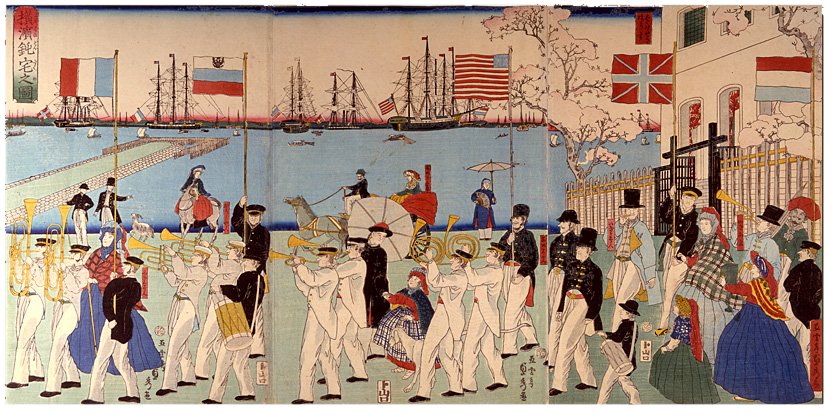 People from different Nations with different clothes and outfits, smokers, strange cargo vessels, a Brassband, a horse carriage, even a lady on horseback |
Yokohama-e
(横浜絵) or in short Hama-e
(ハマ絵) are woodcut prints depicting foreigners
who resided in their designated semi colonial
area in Yokohama (Dejima Island) since the
forced opening of Japan in 1854. The features of
these foreigners, their behaviour, and the
imported foreign products raised the interest of
the Japanese public, not used to these kinds of
views. |
||||
| Yukata
|
浴衣 |
A yukata is a
Japanese garment, originally worn by men. Like other
forms of traditional Japanese clothing, yukata are
made with straight seams and wide sleeves. Men's
yukata are distinguished by the shorter sleeve
extension of approximately 10 cm from the armpit seam.
A standard yukata ensemble consists of a cotton
undergarment (juban), yukata, obi, bare feet, sandals
(geta), a foldable or fixed hand fan, and a carry bag
(kinchaku). Also refer to kimono and obi |
Copyright 2008 ff: Hans P. Boehme
